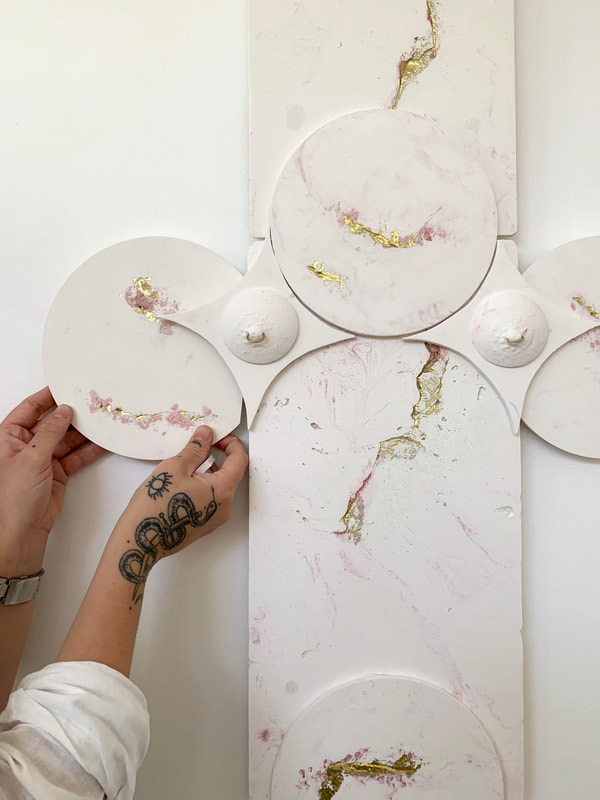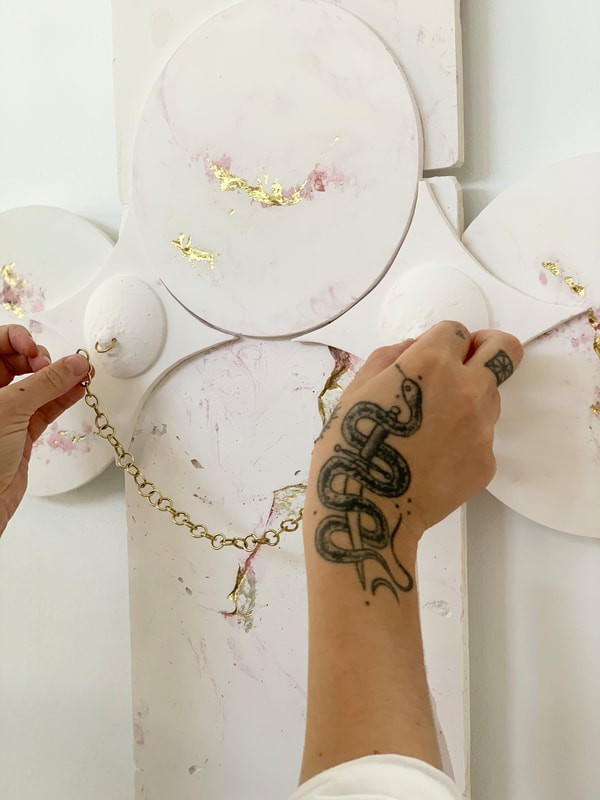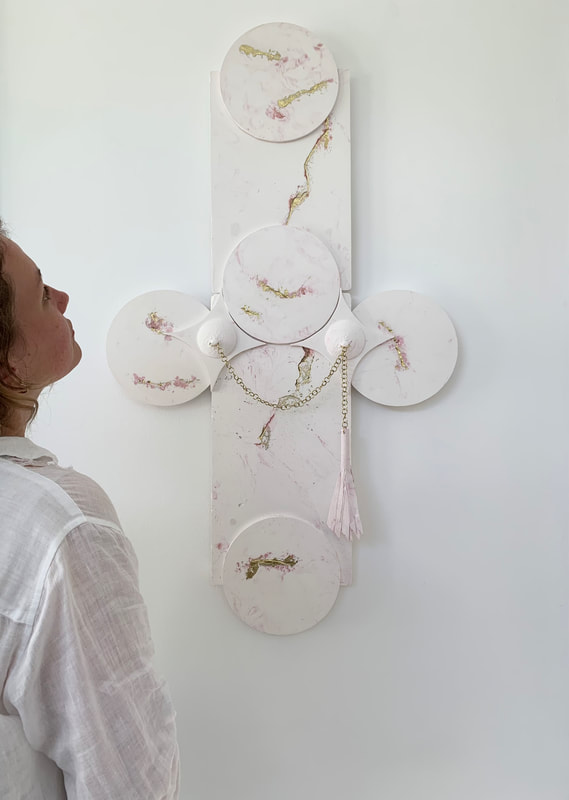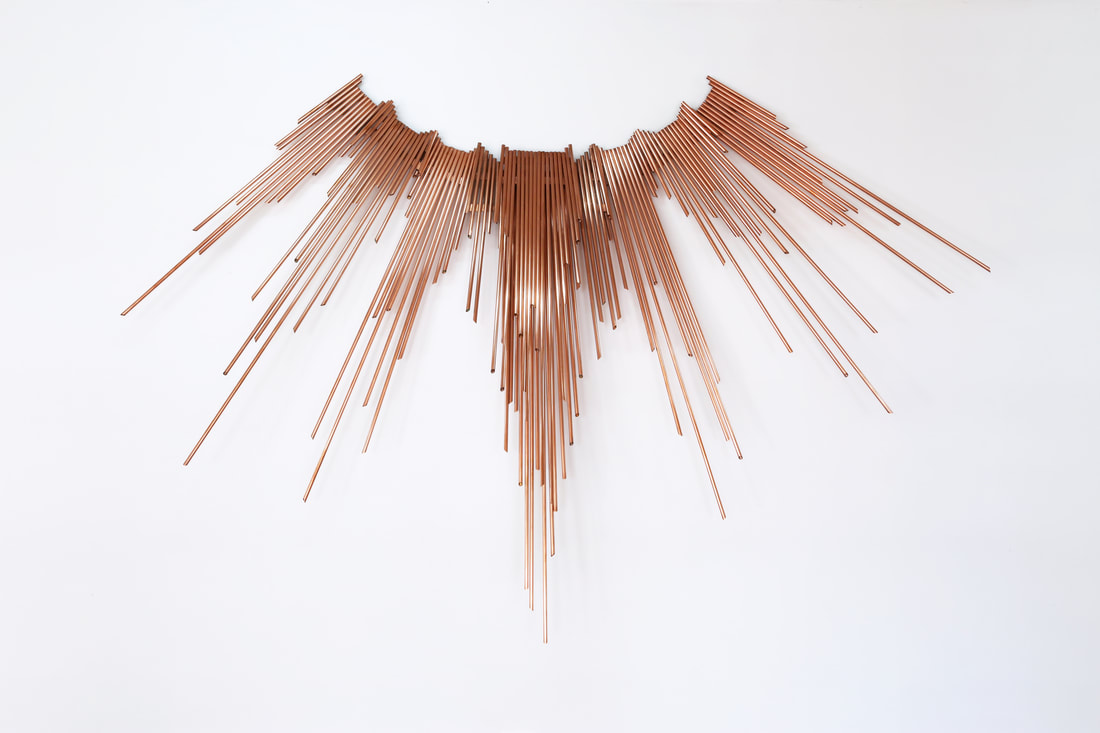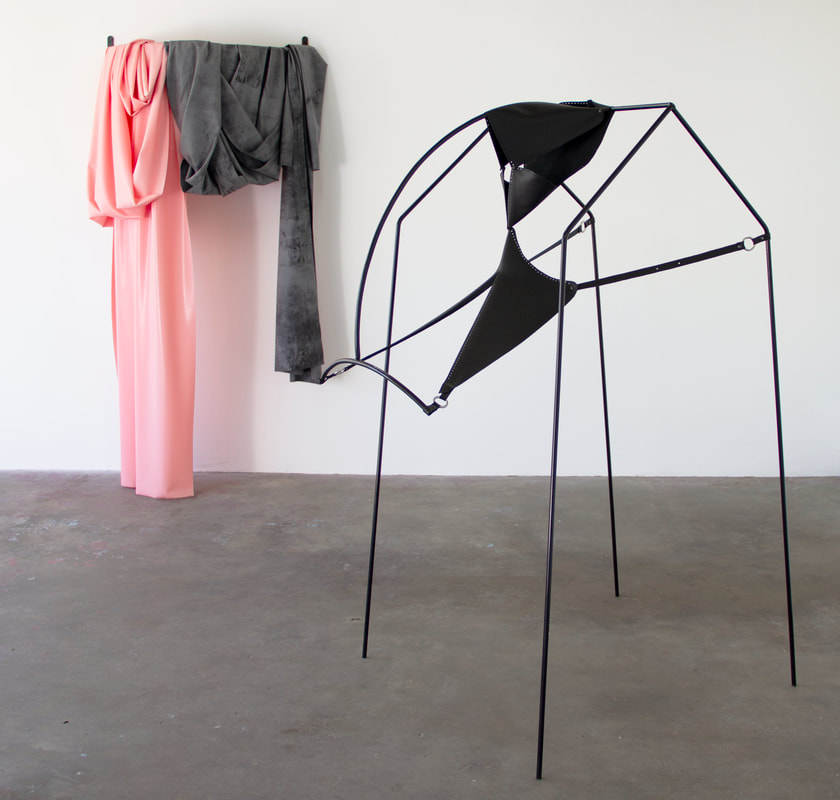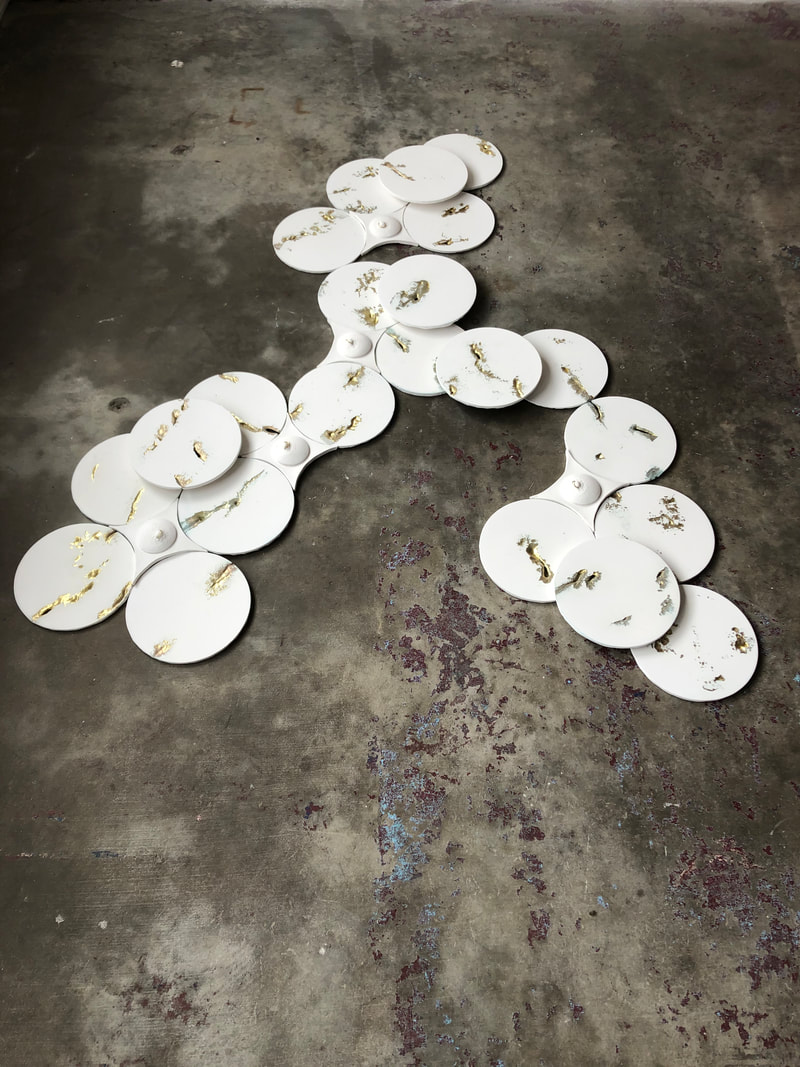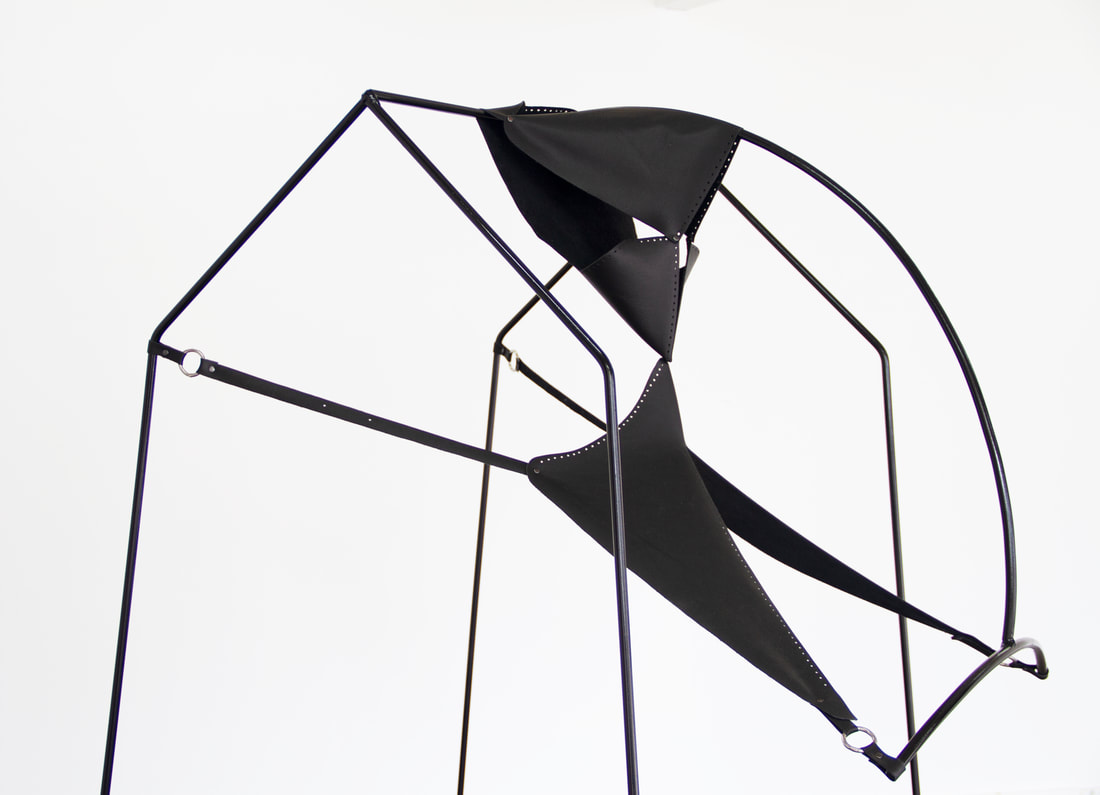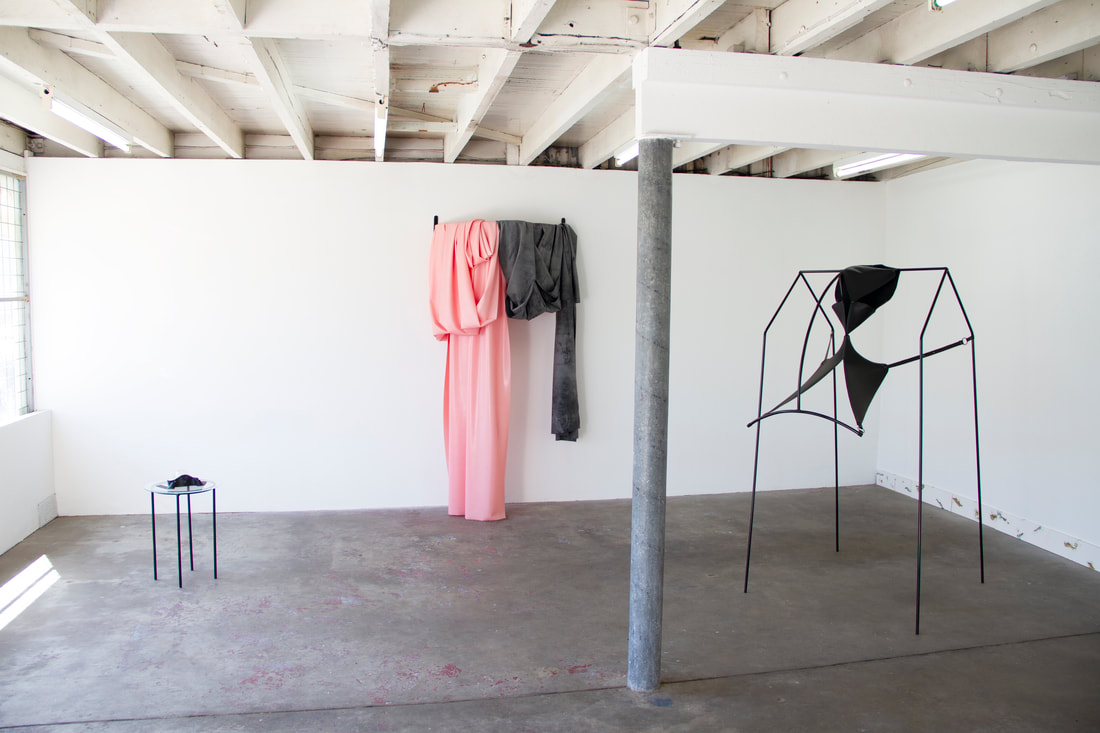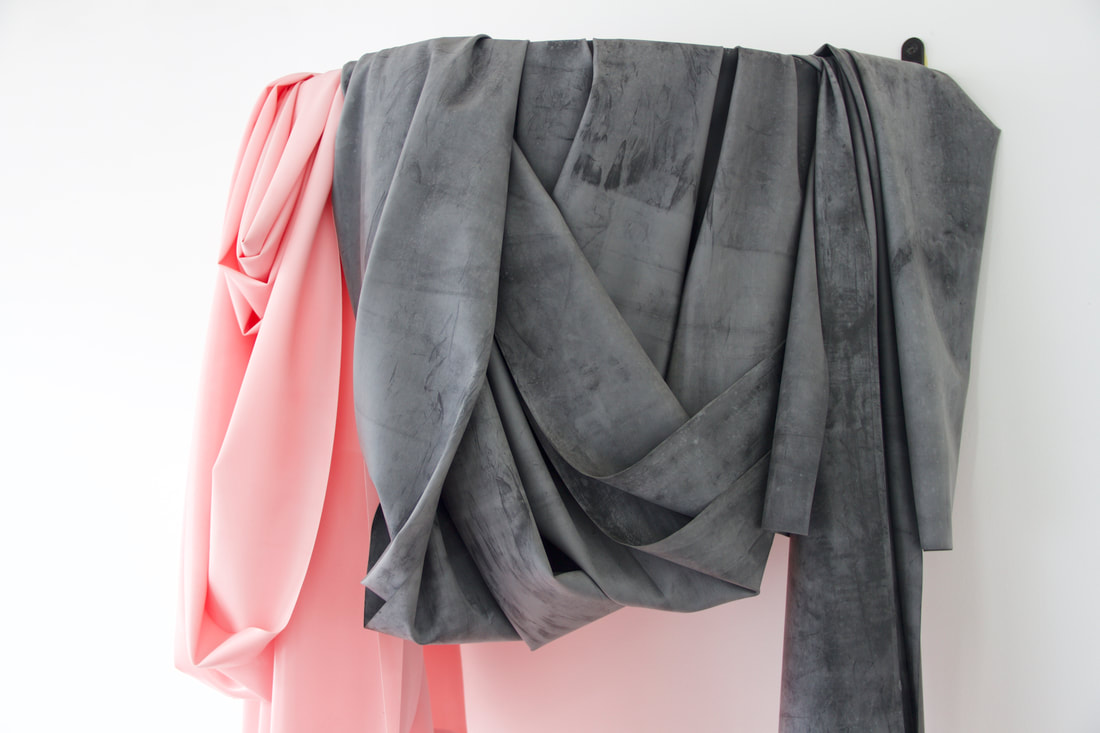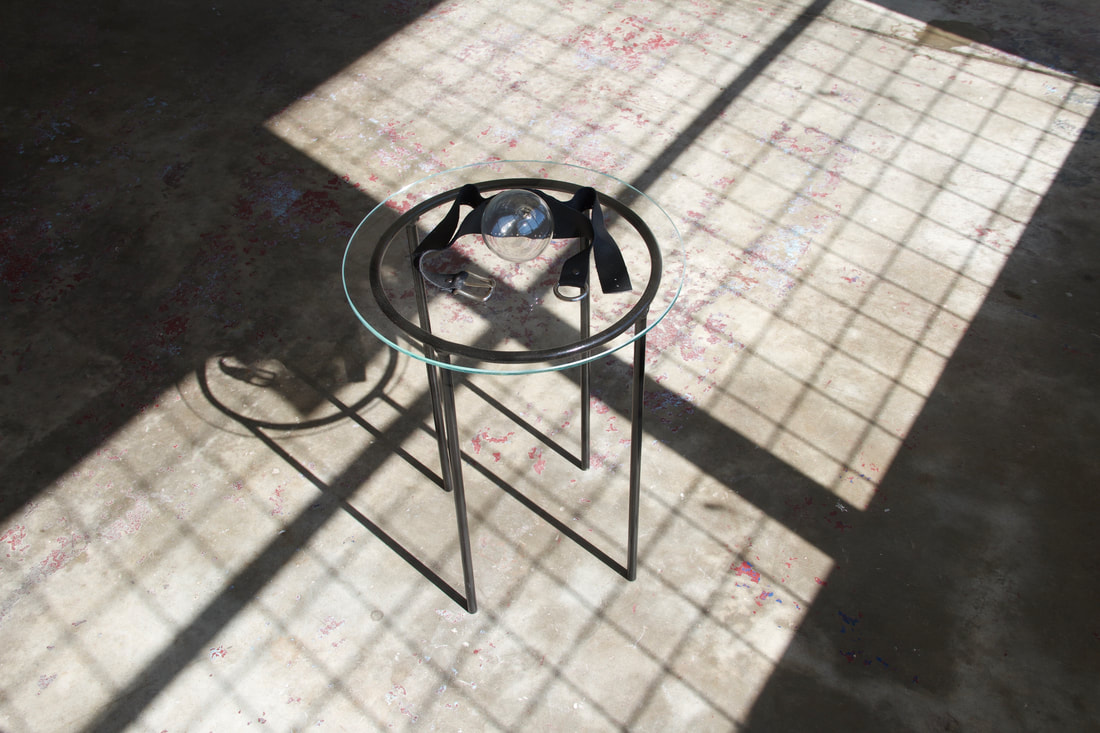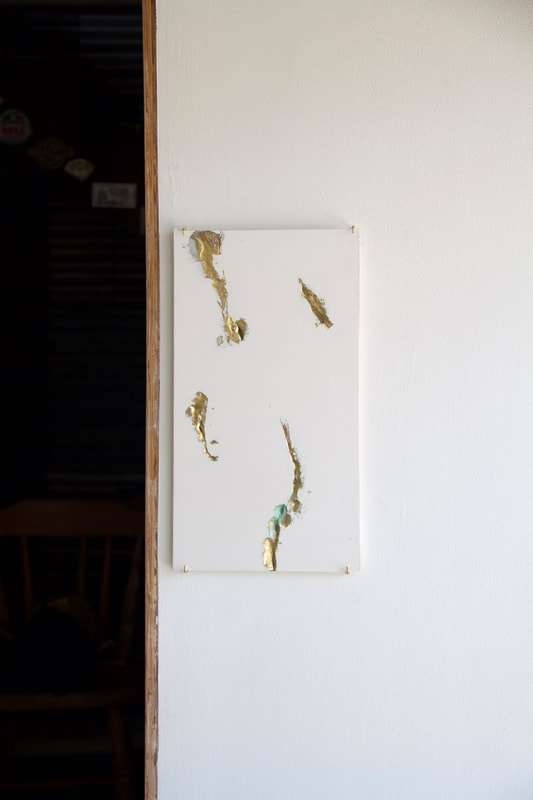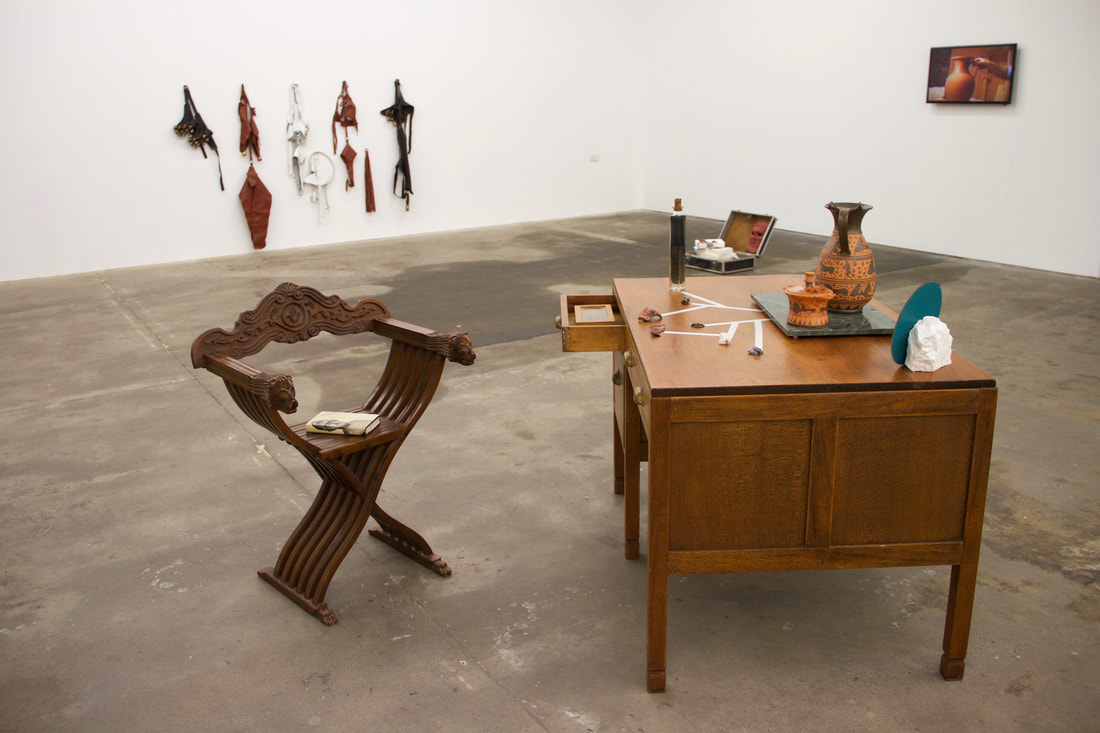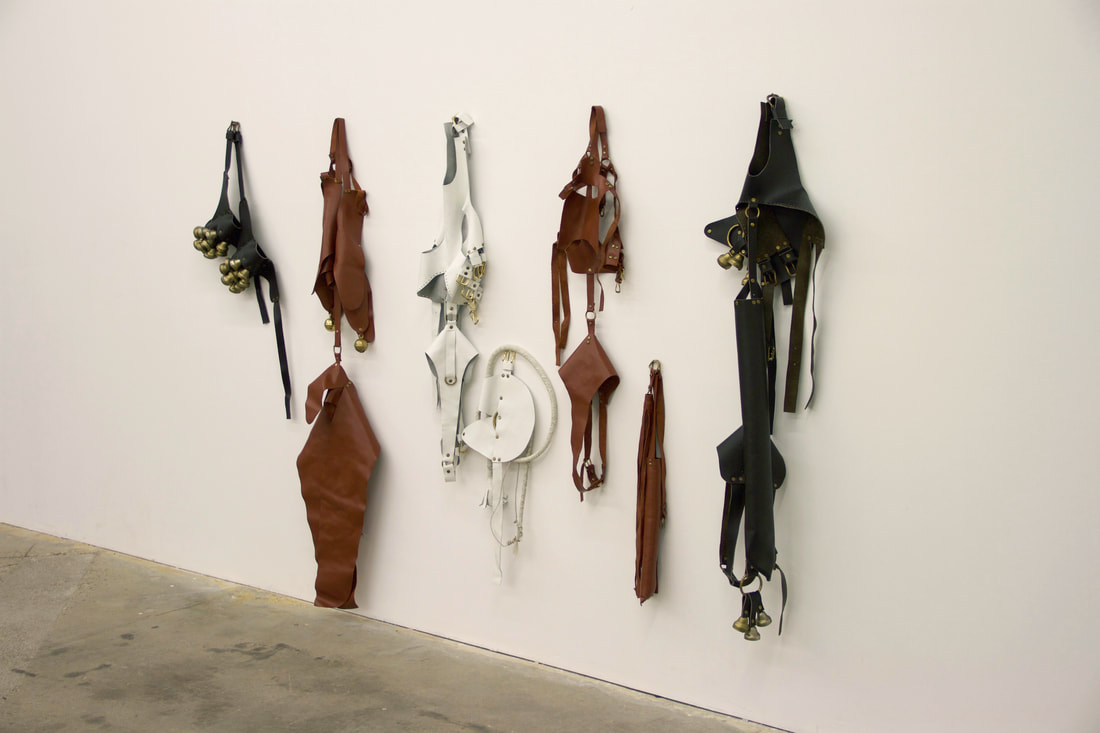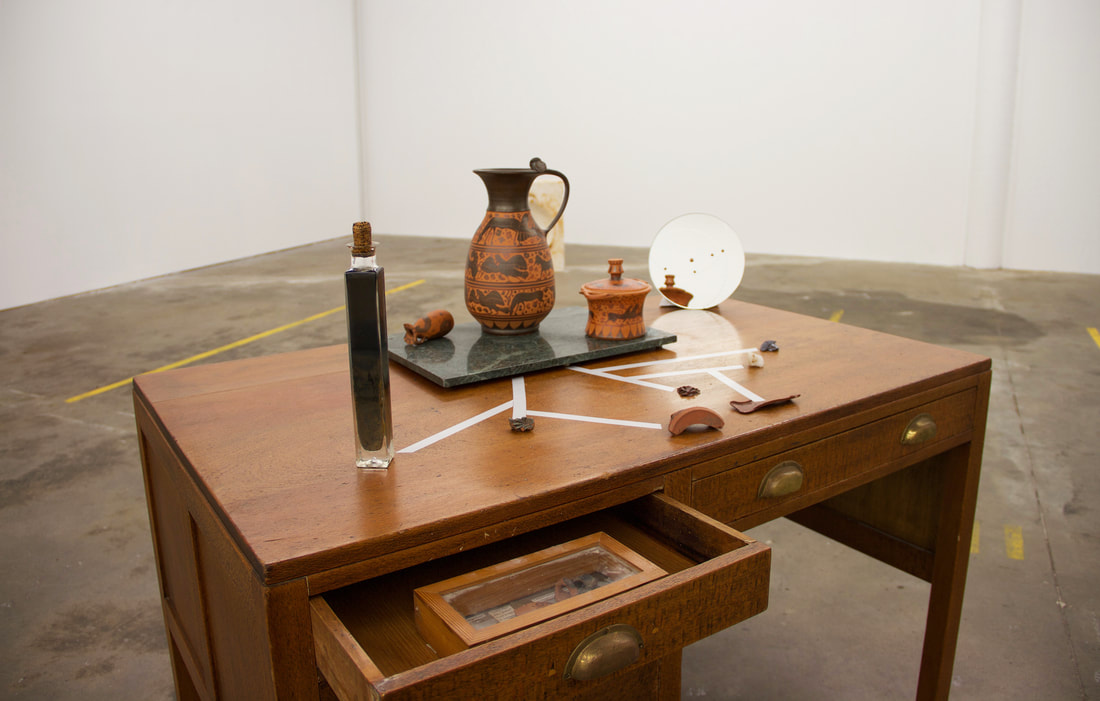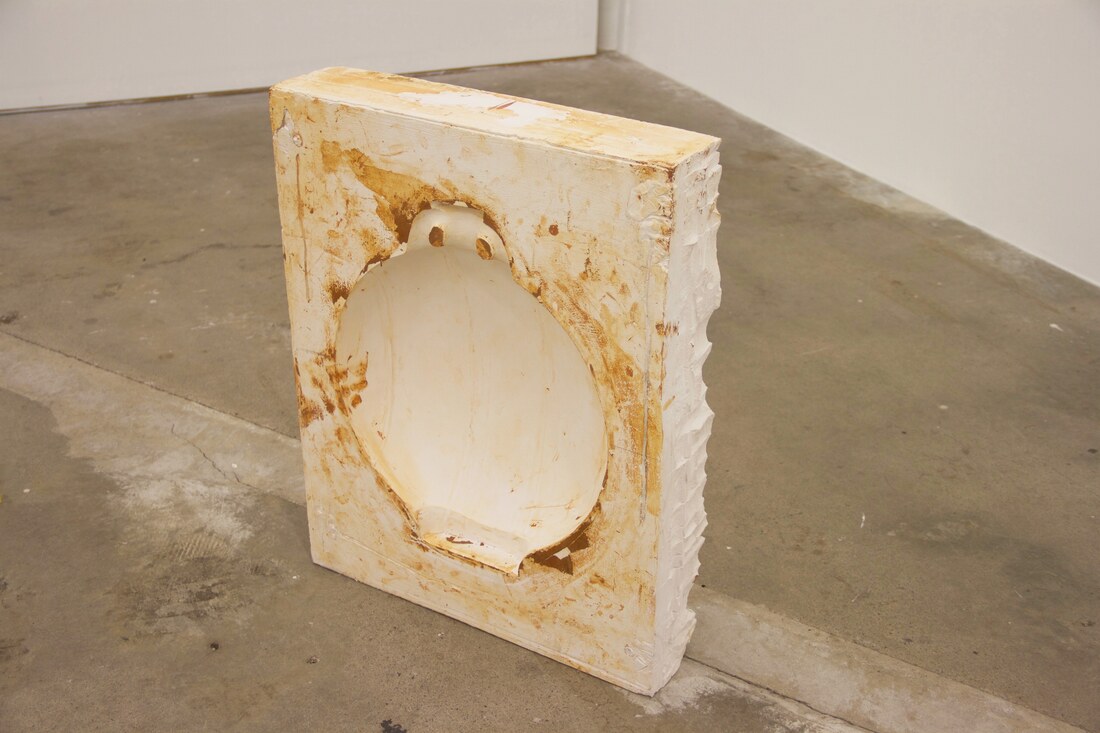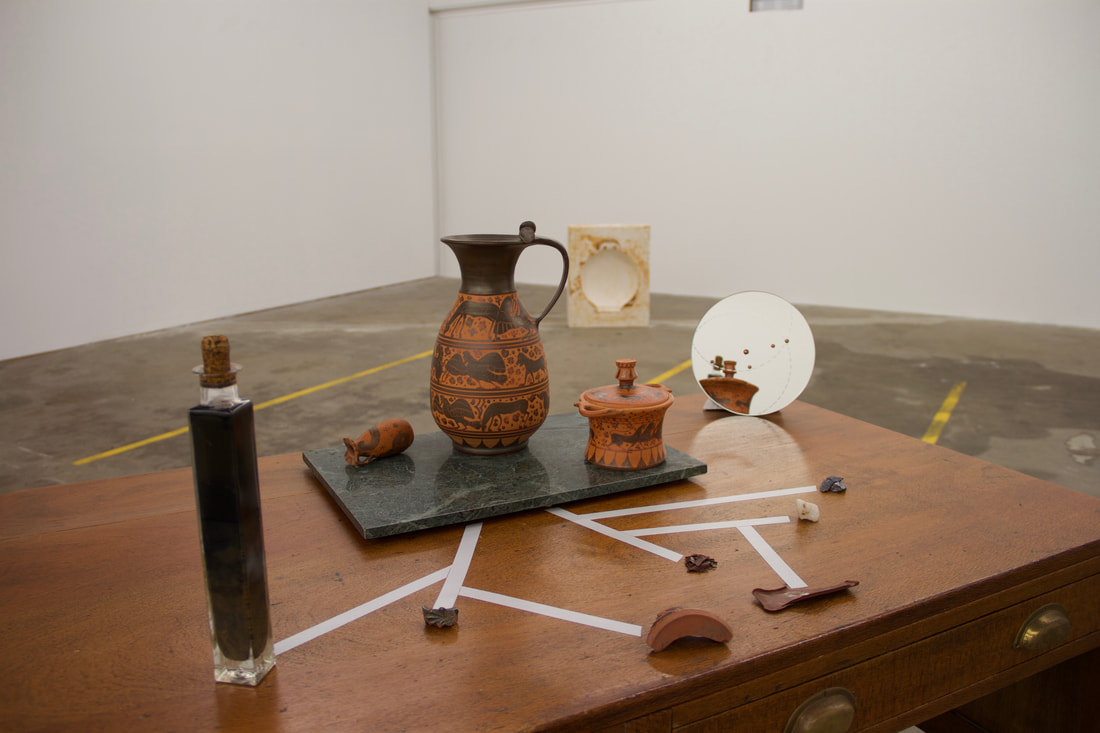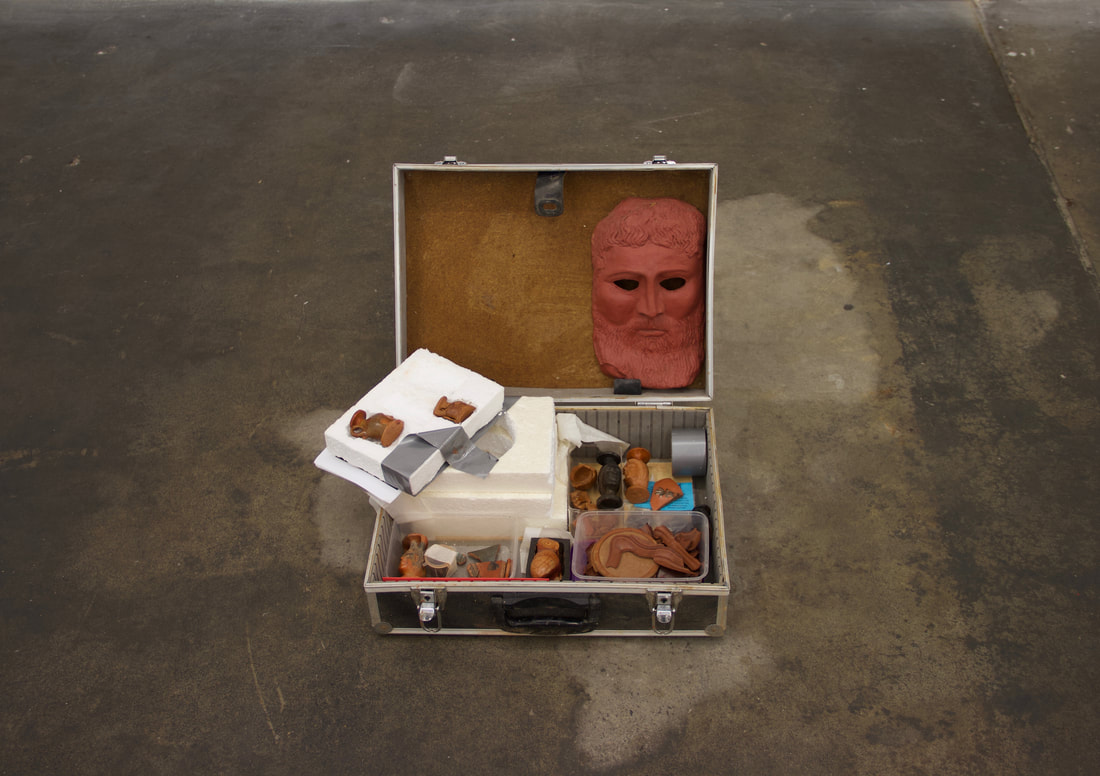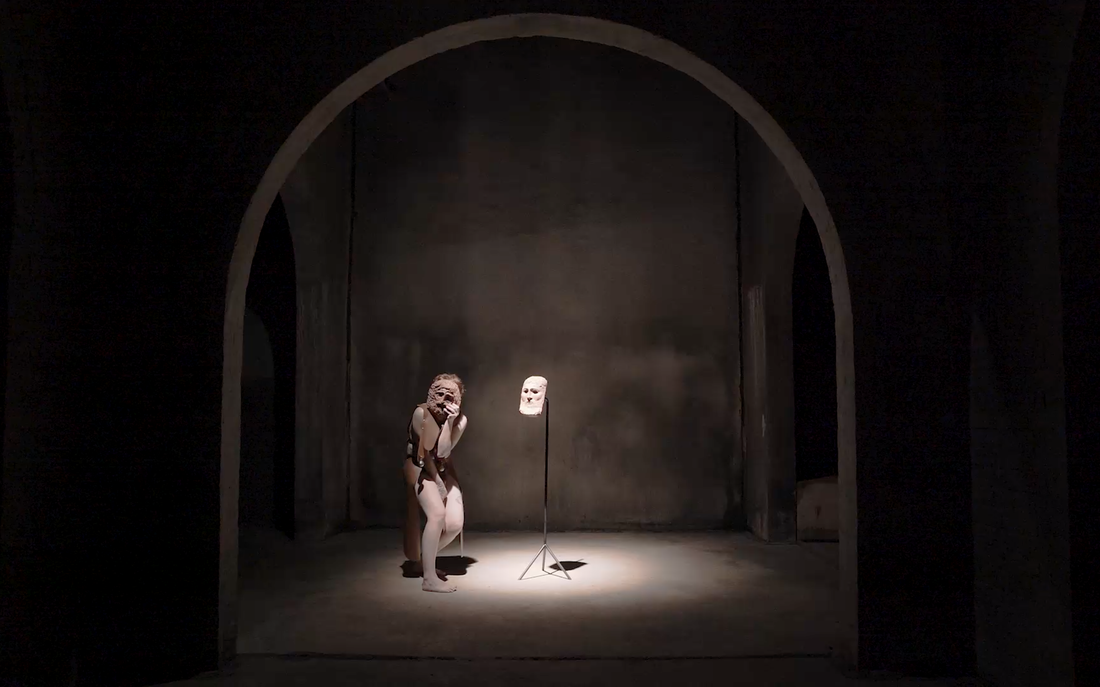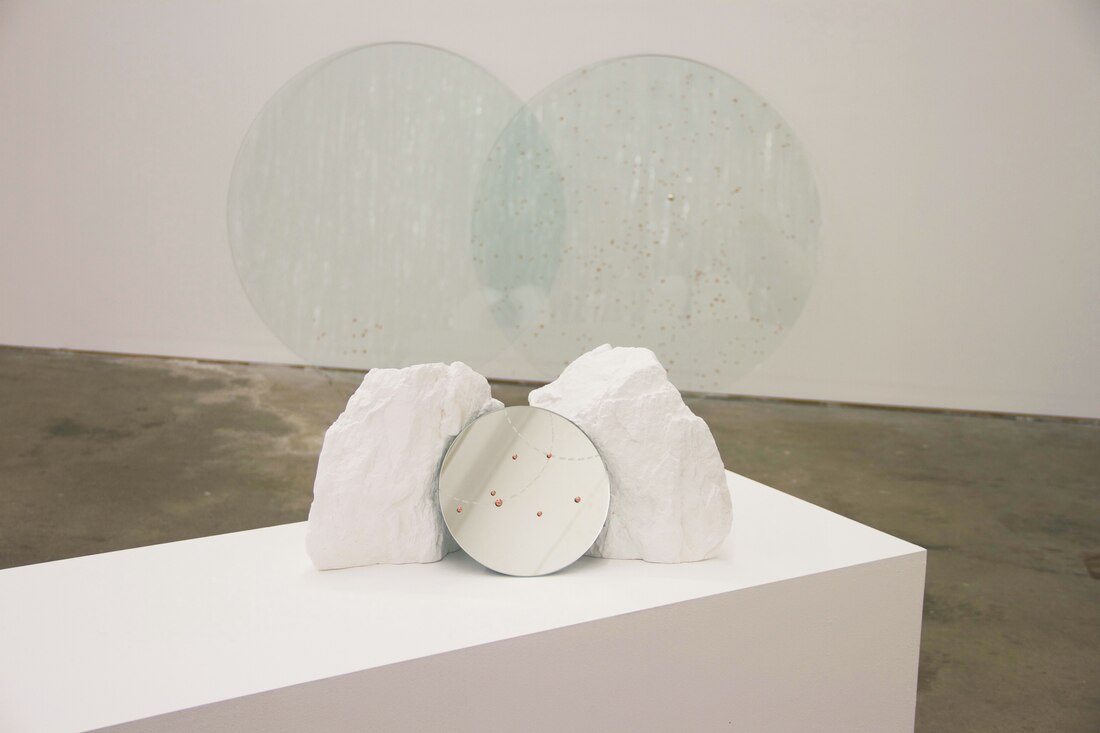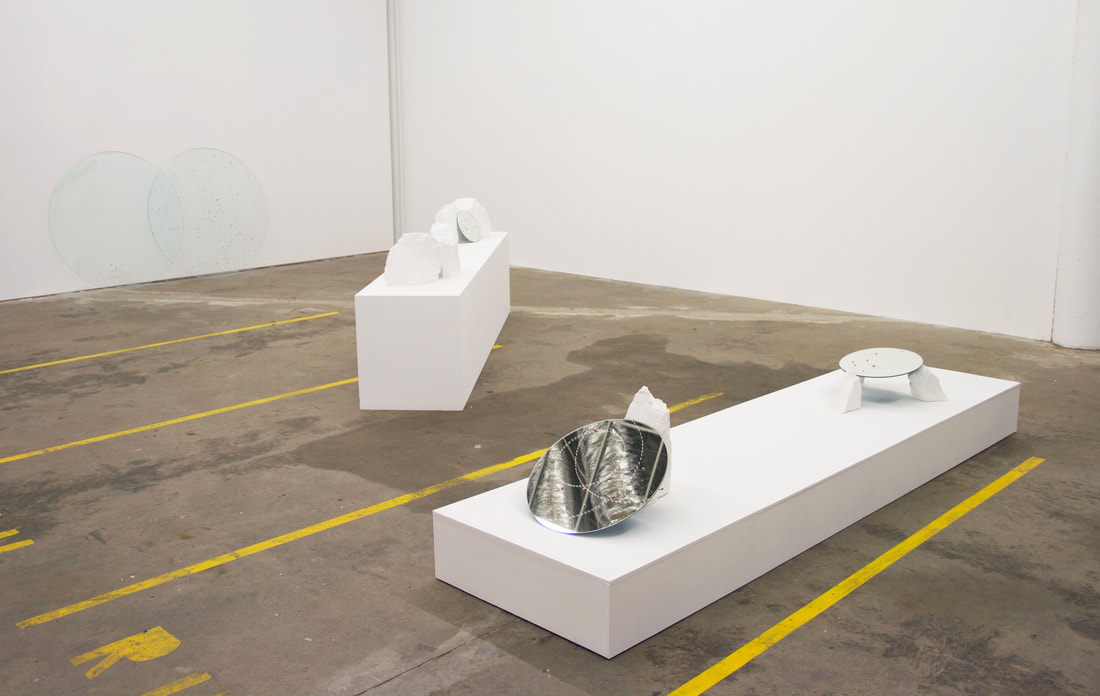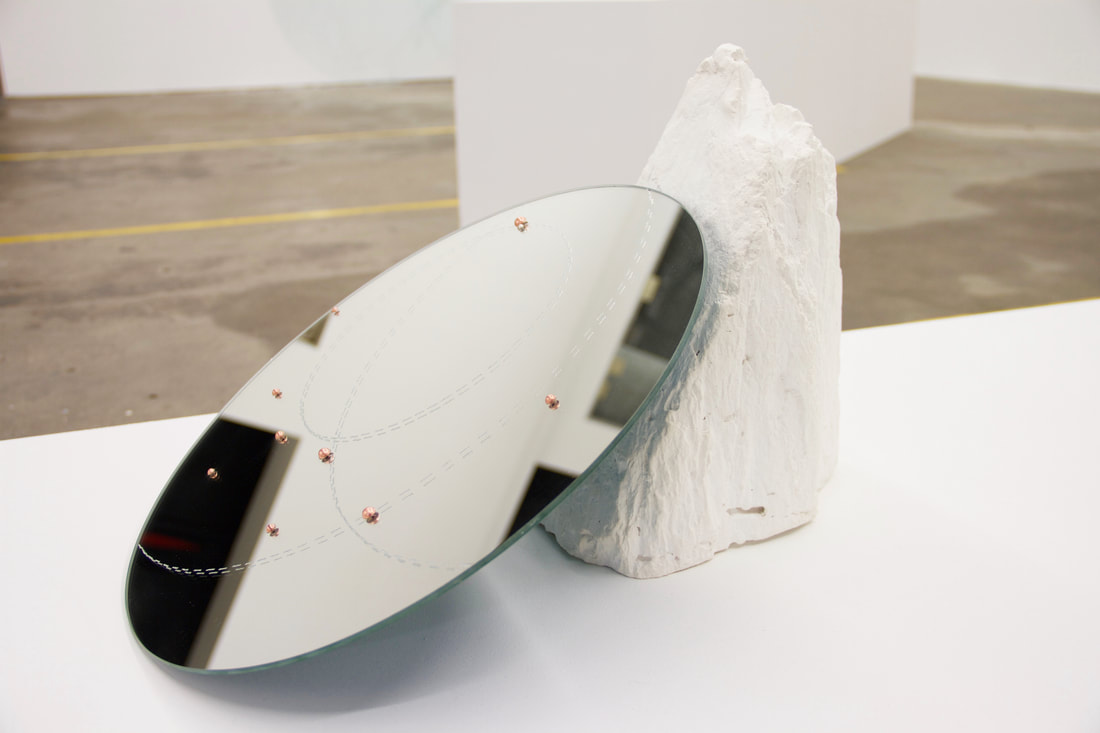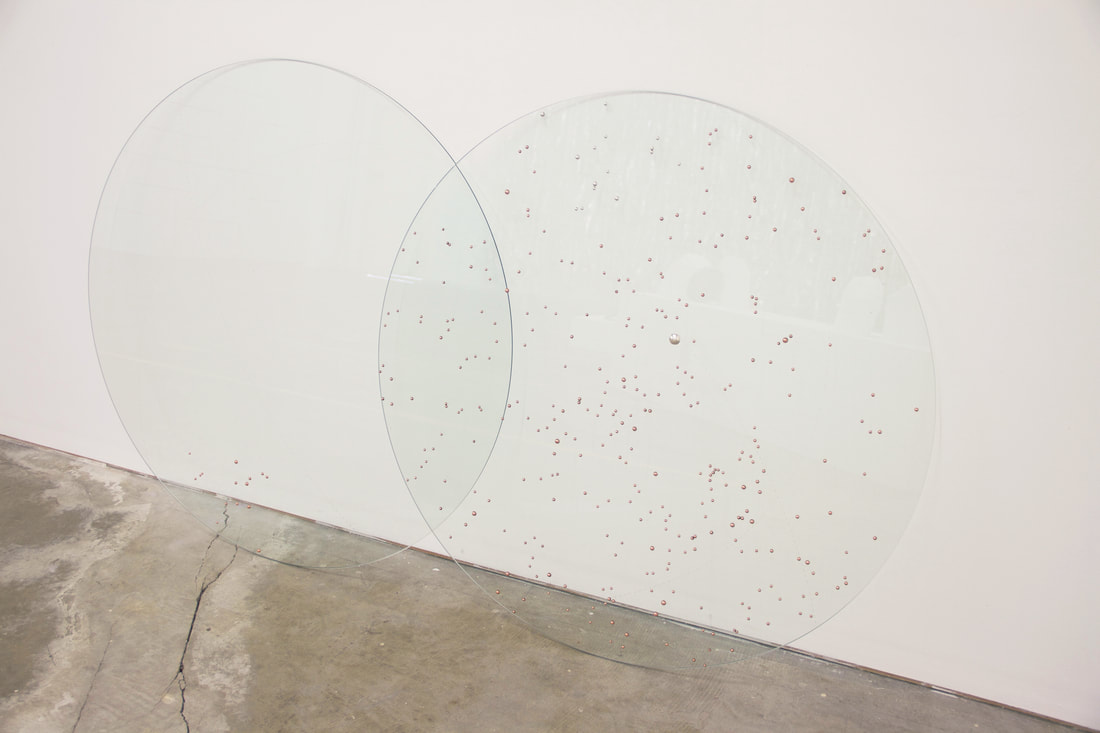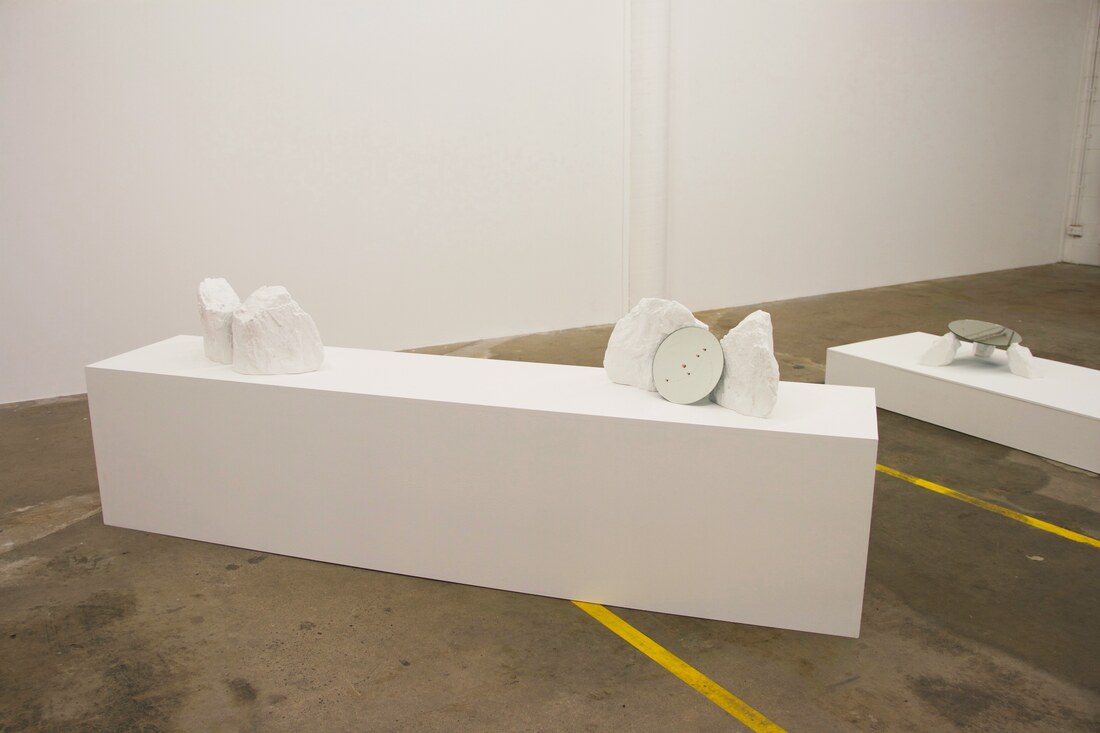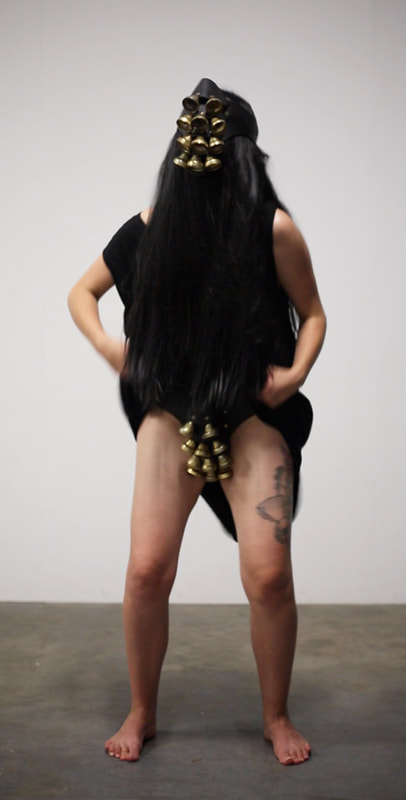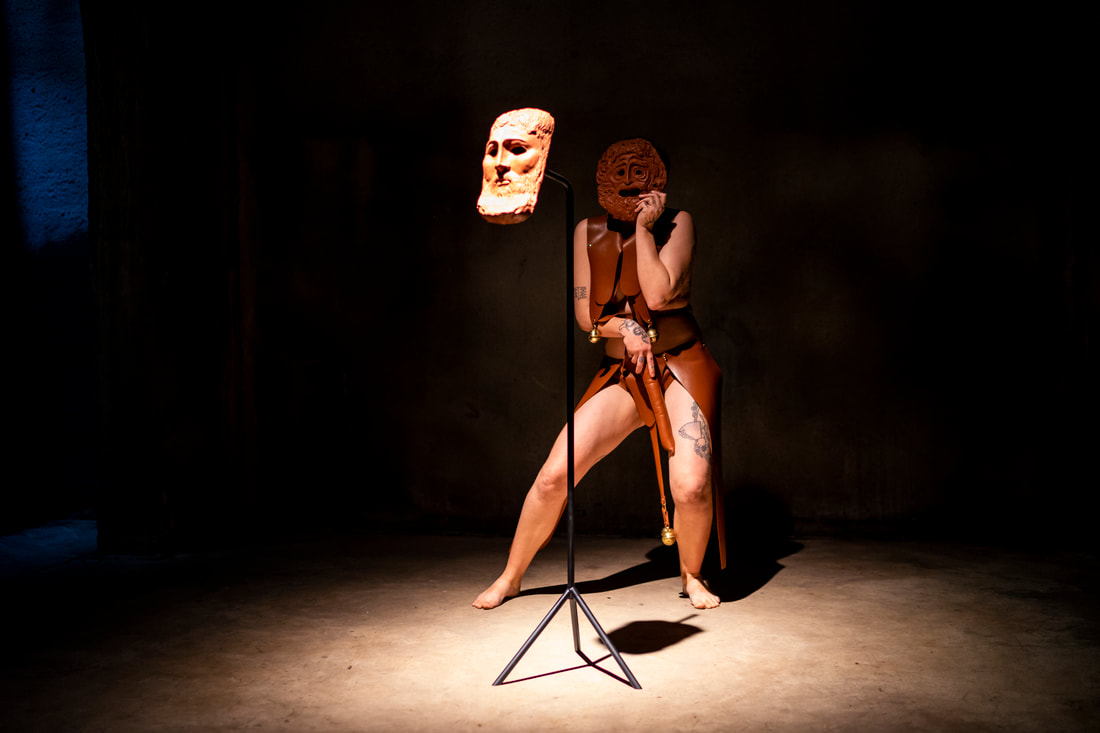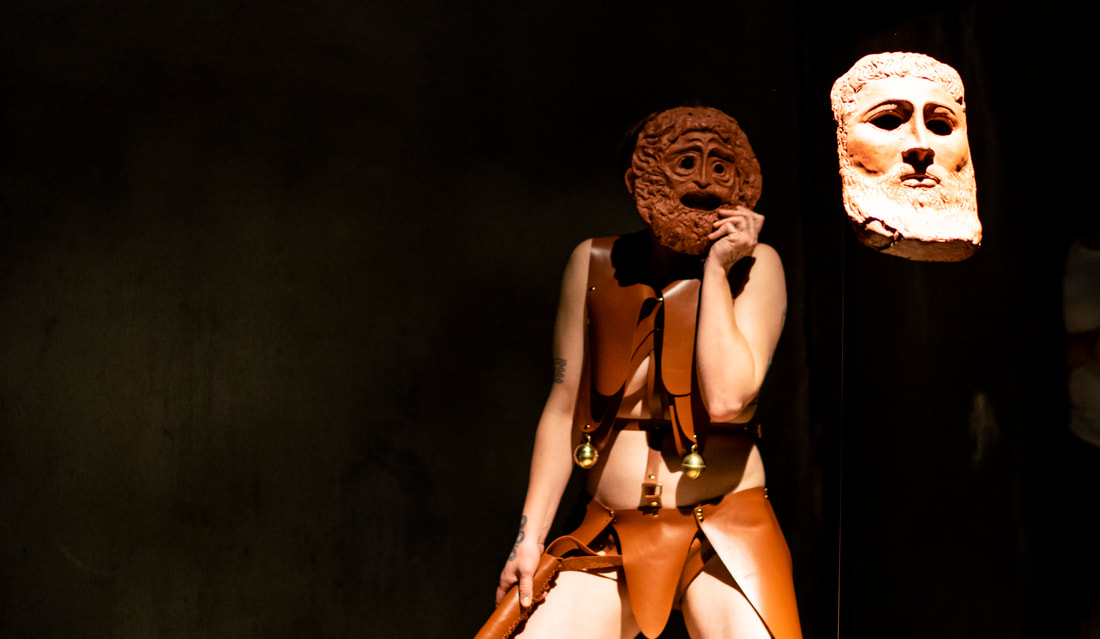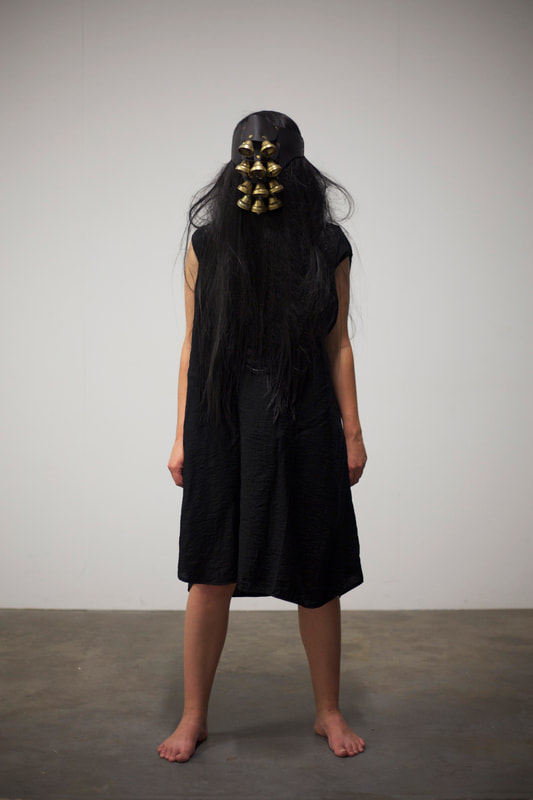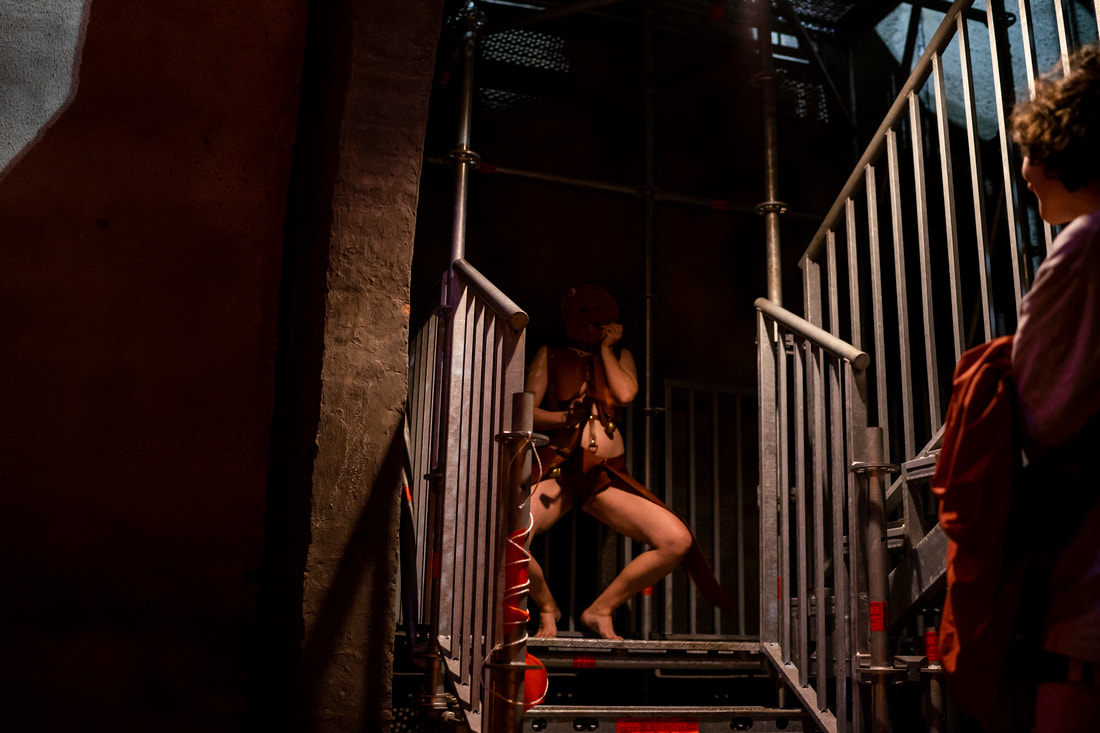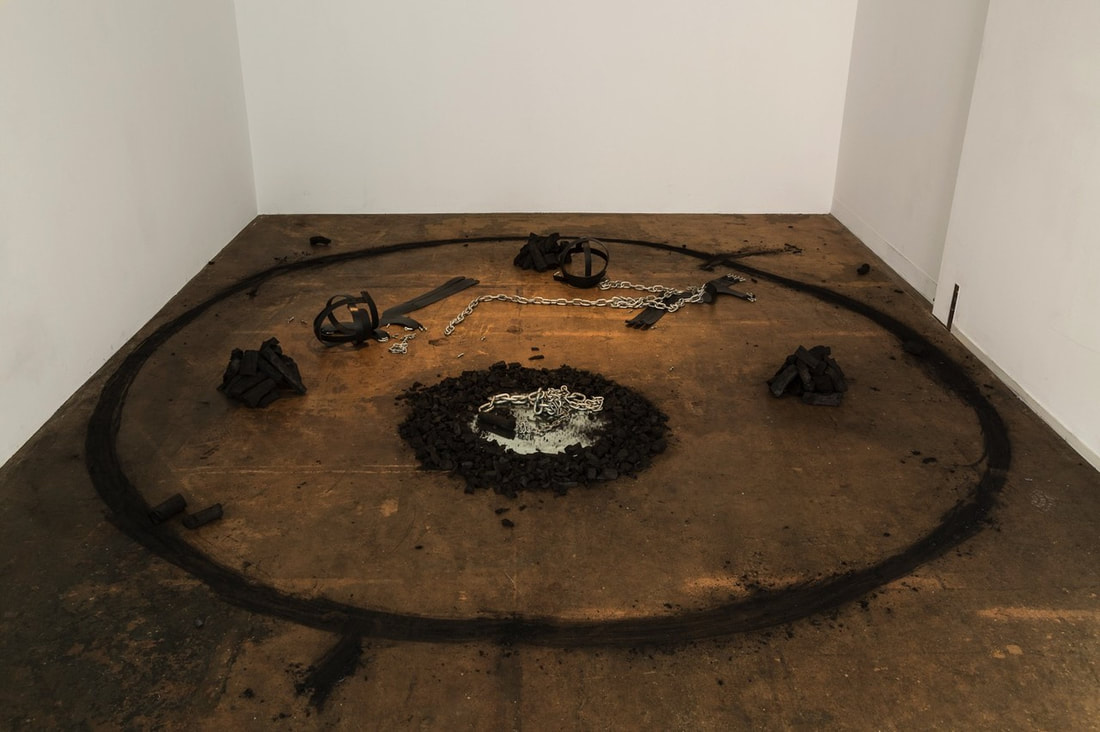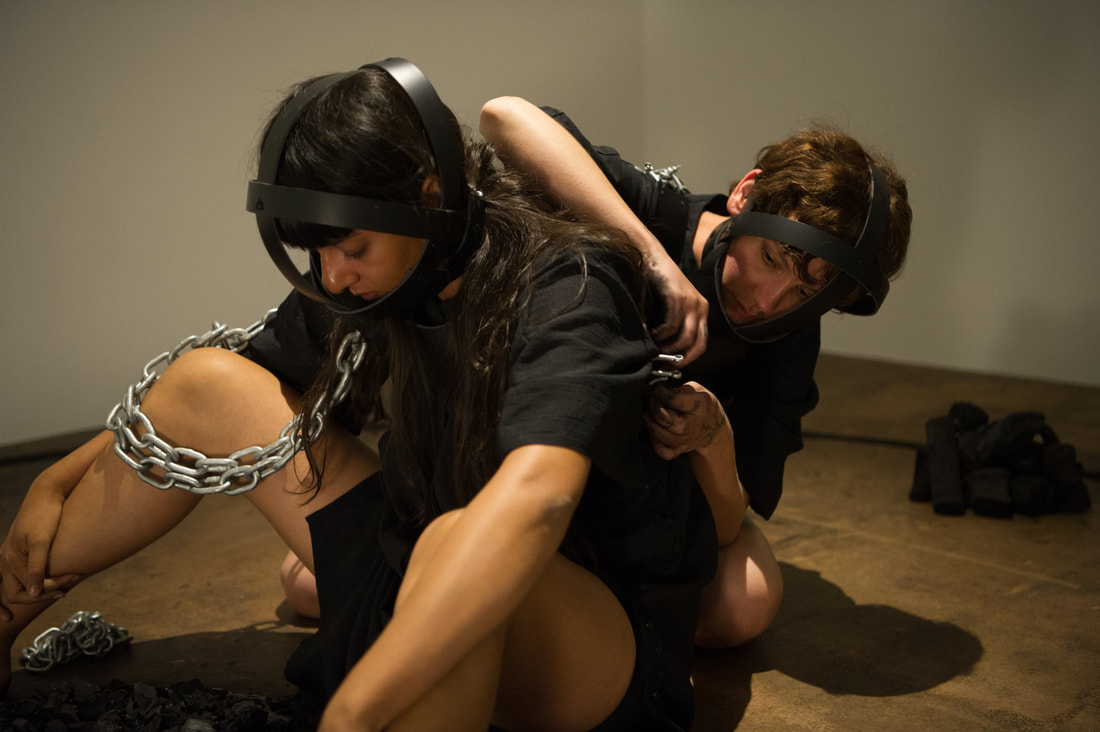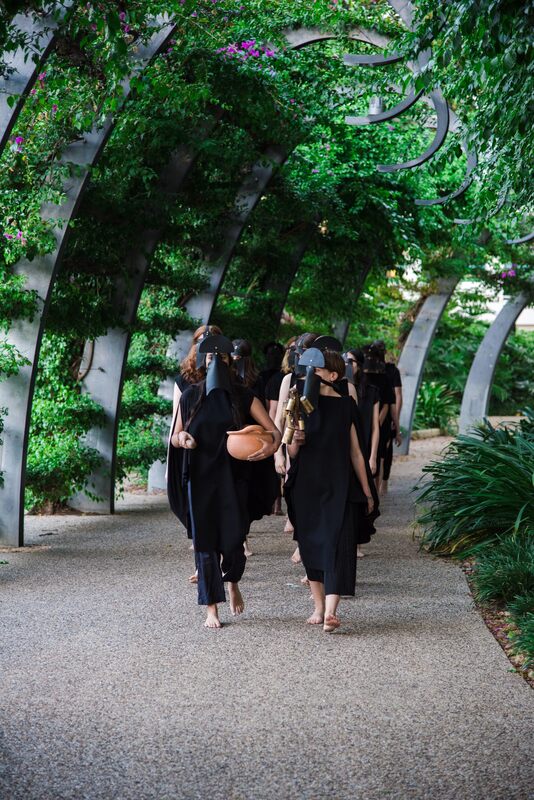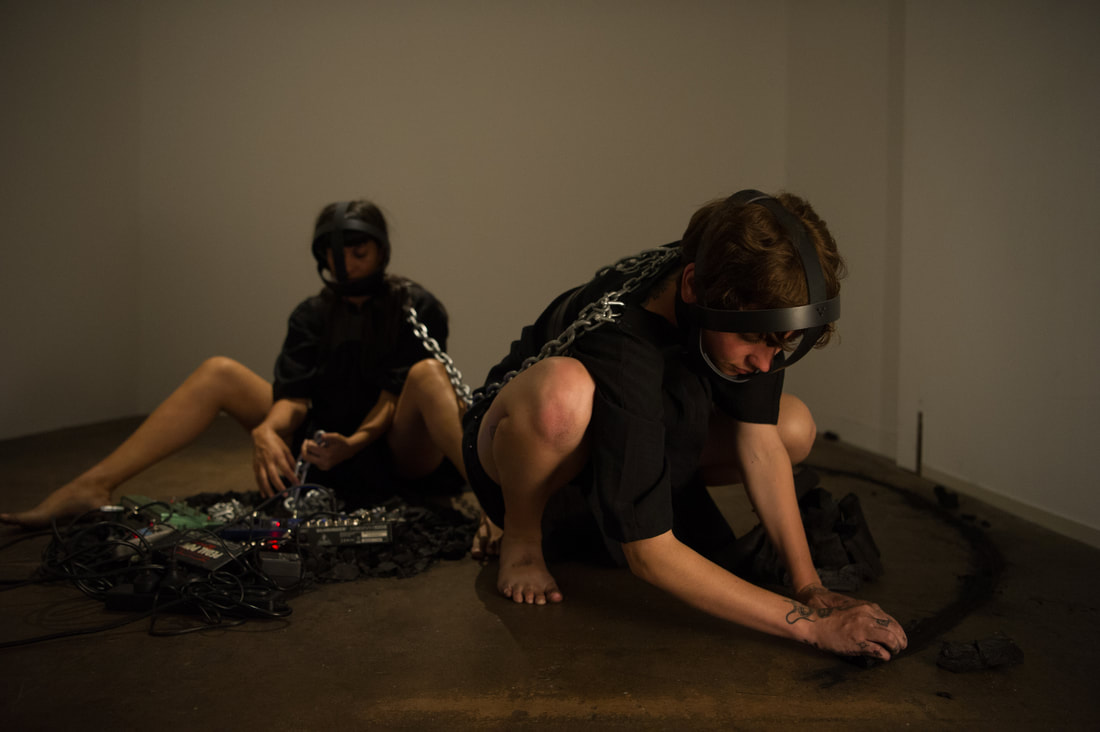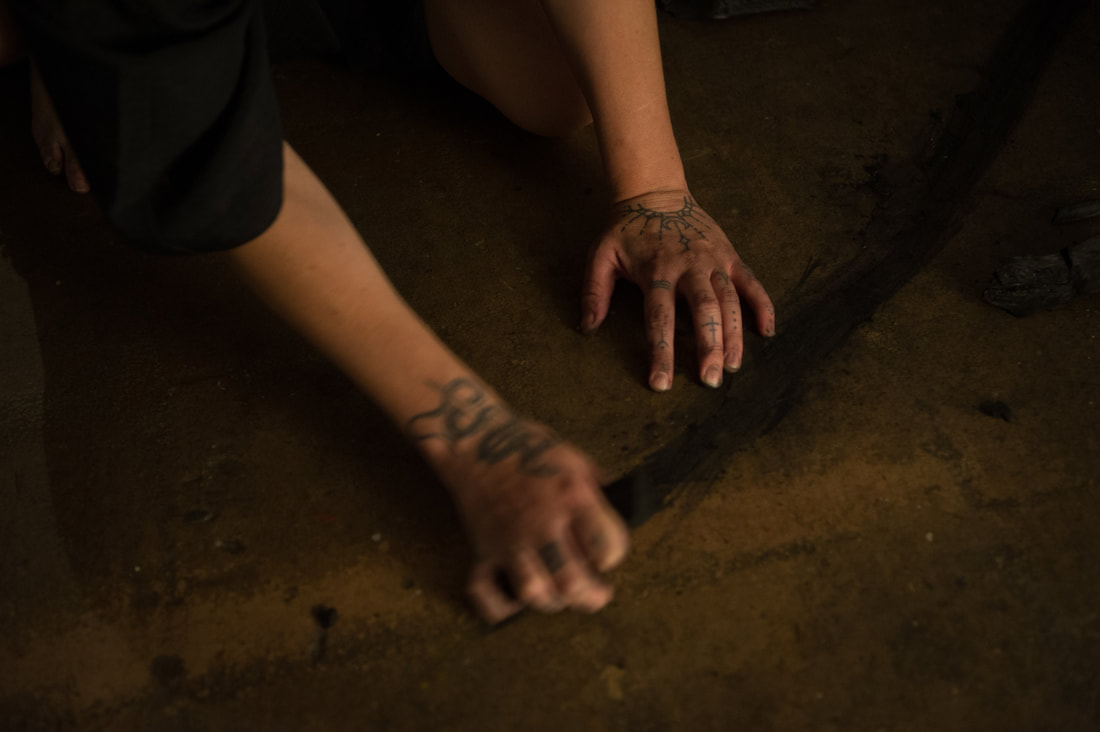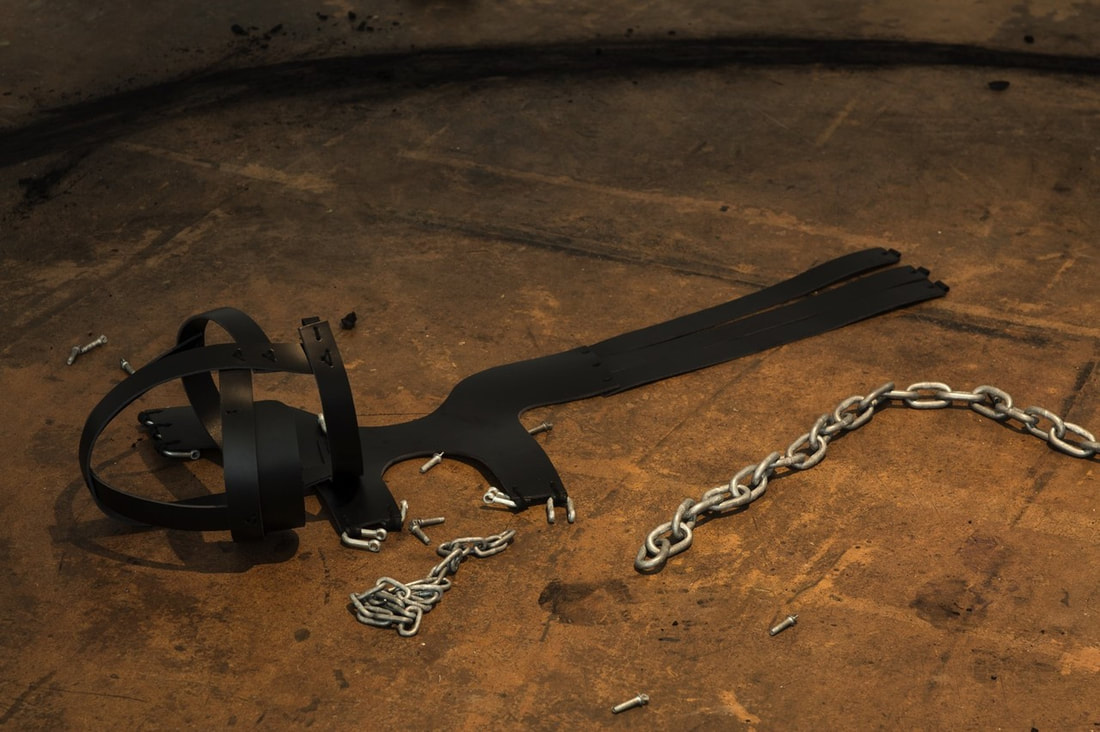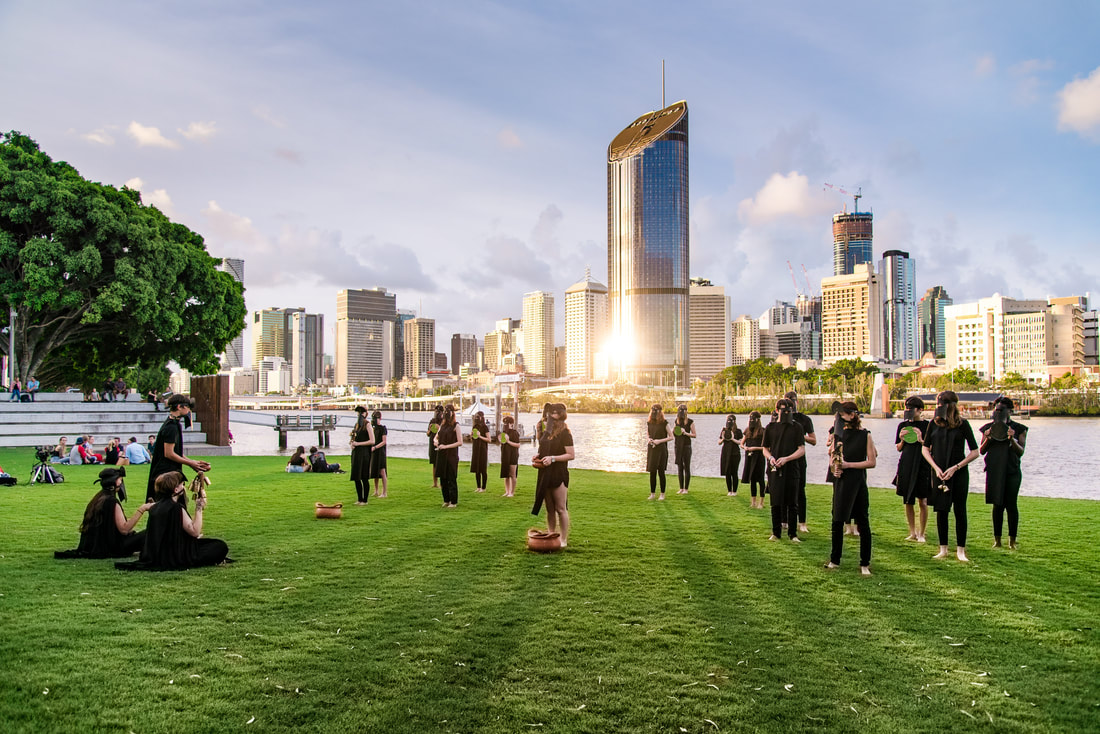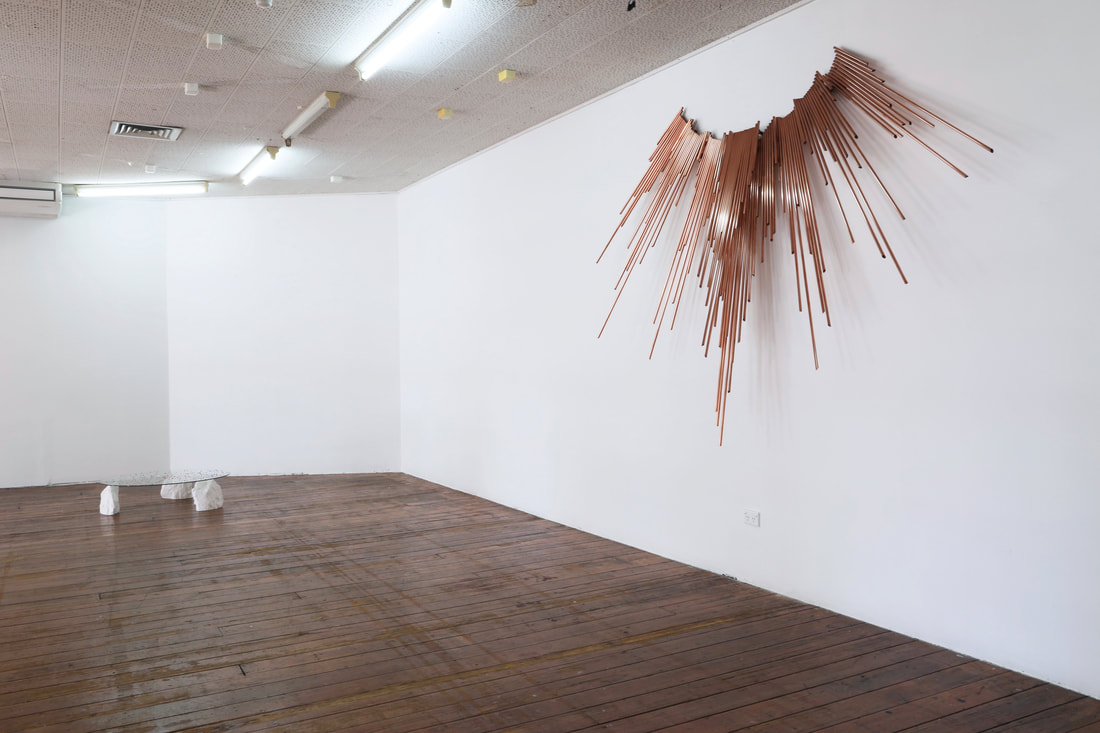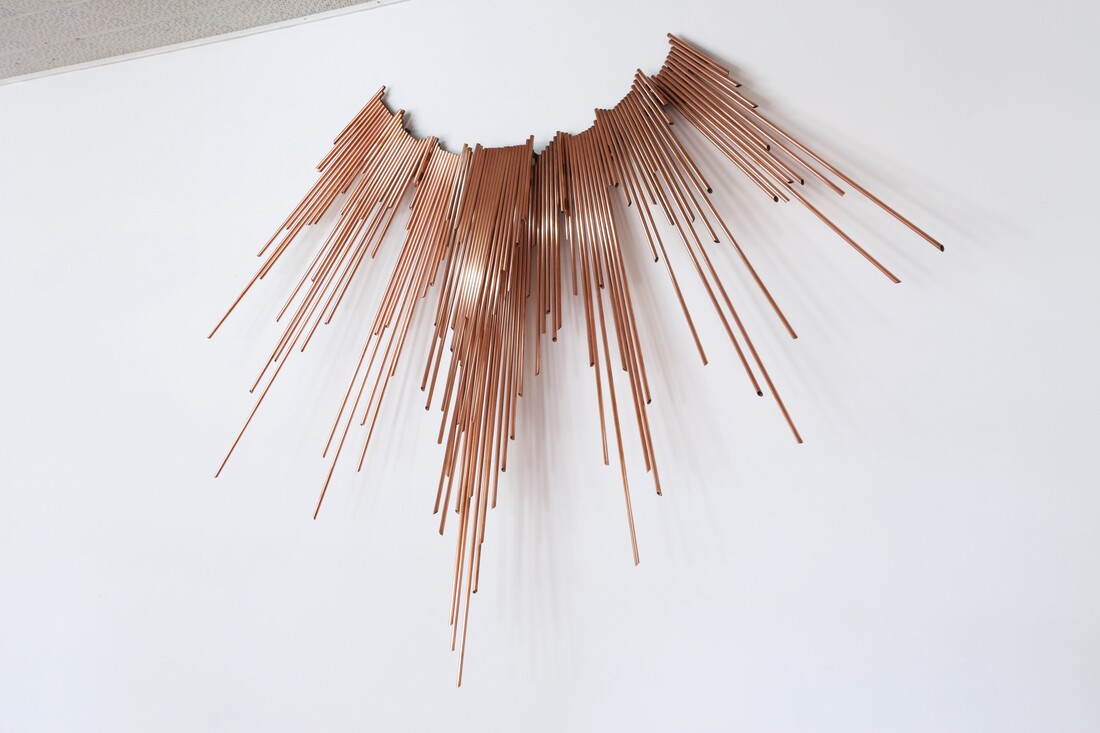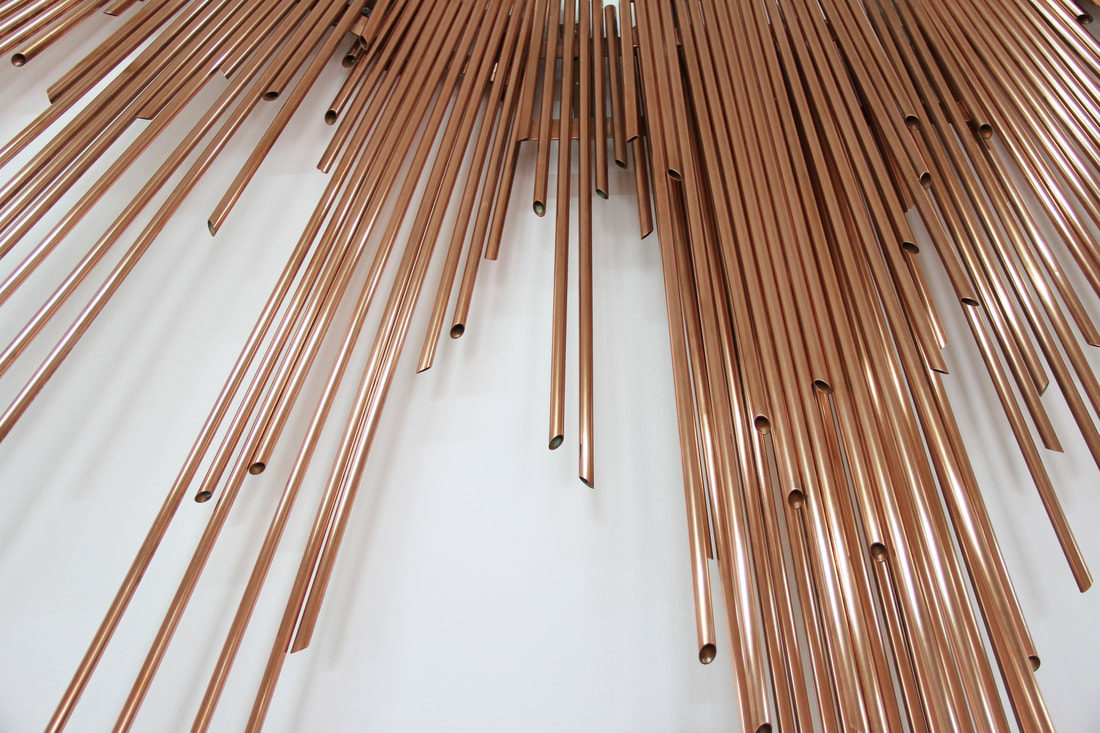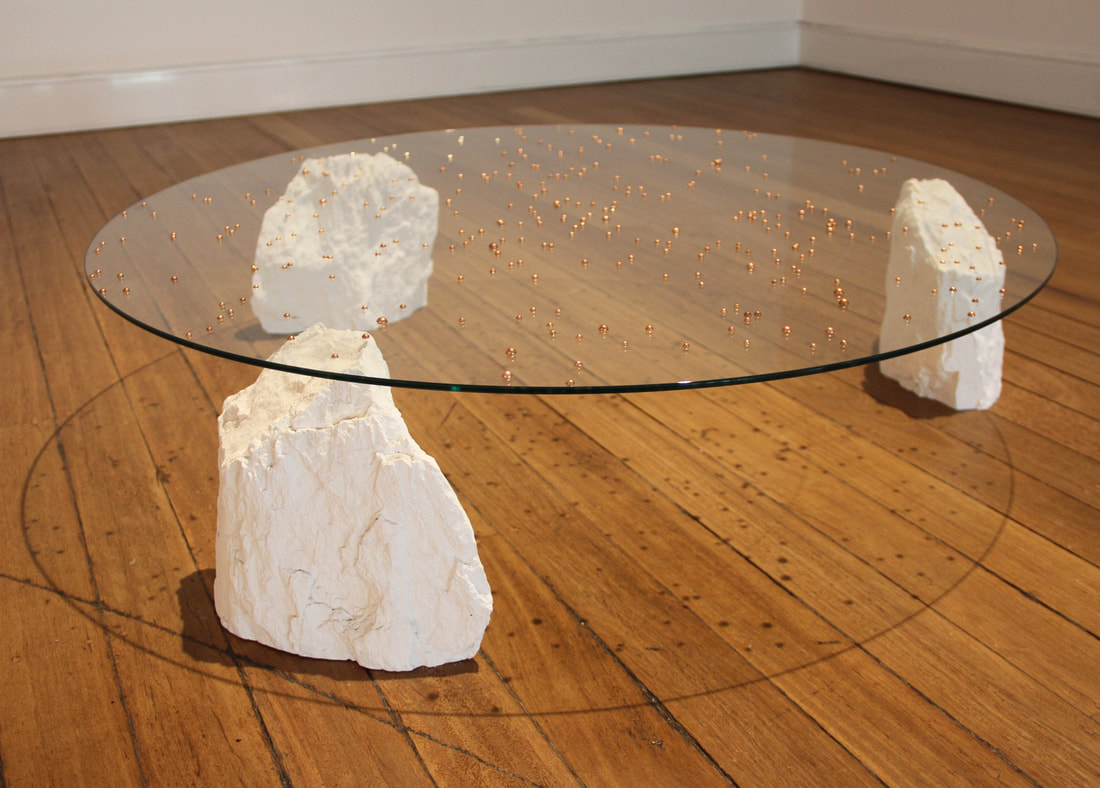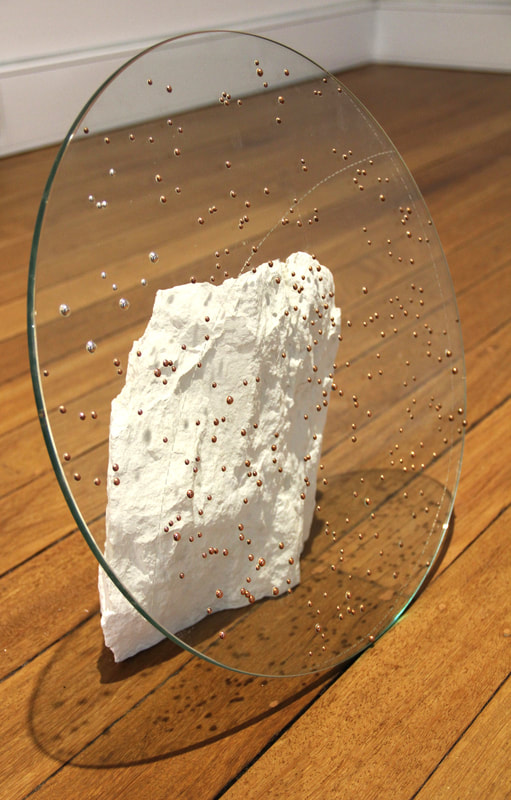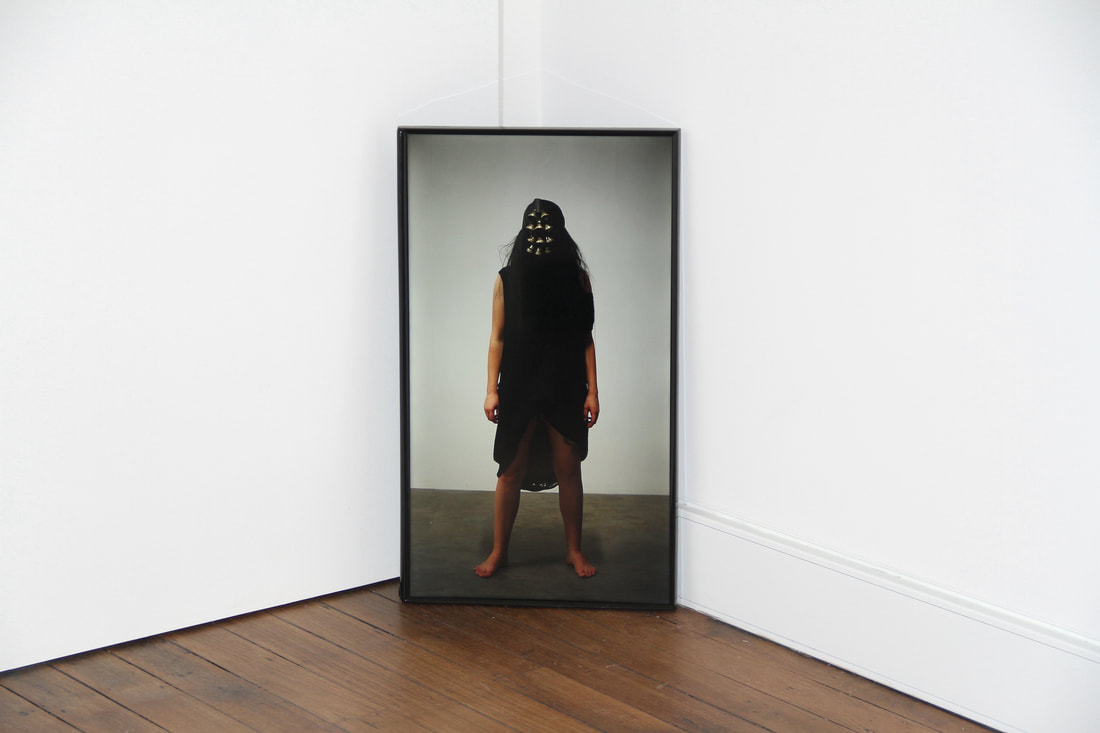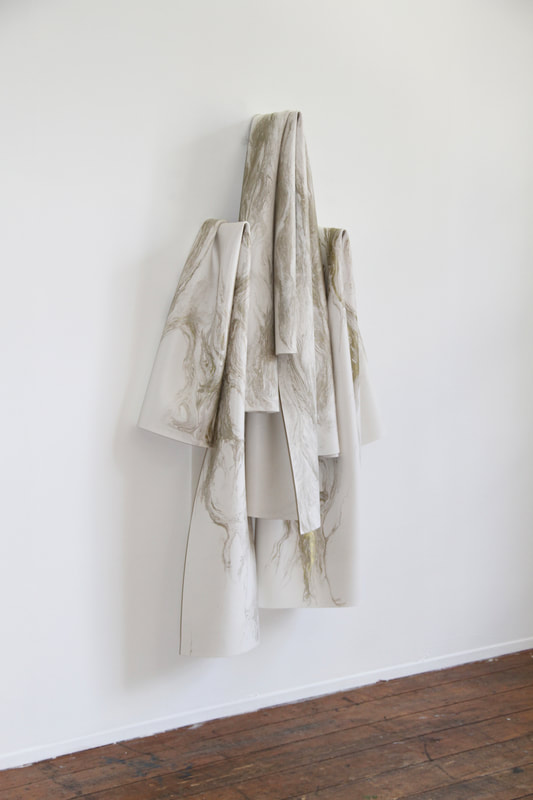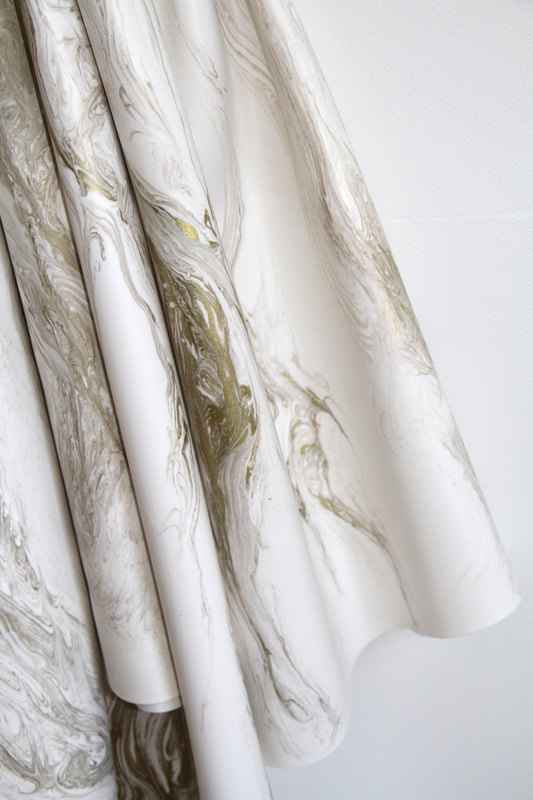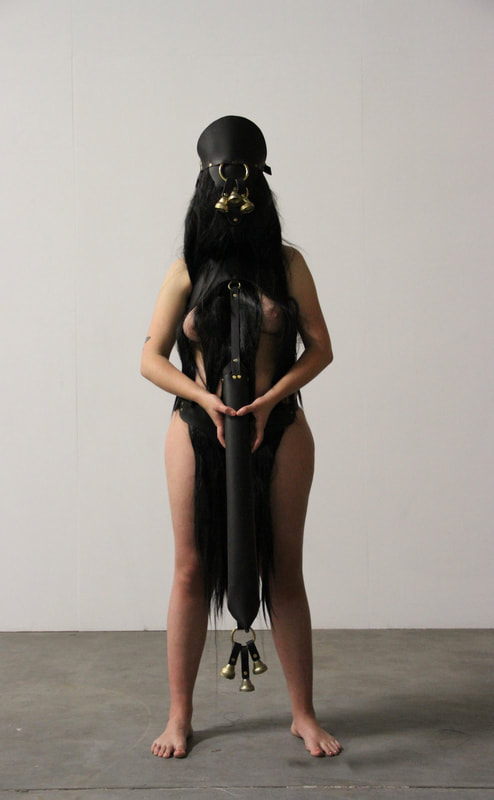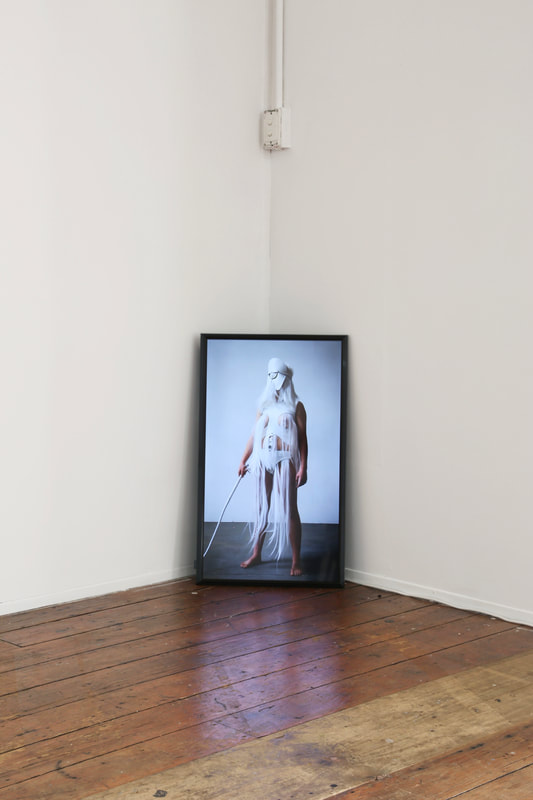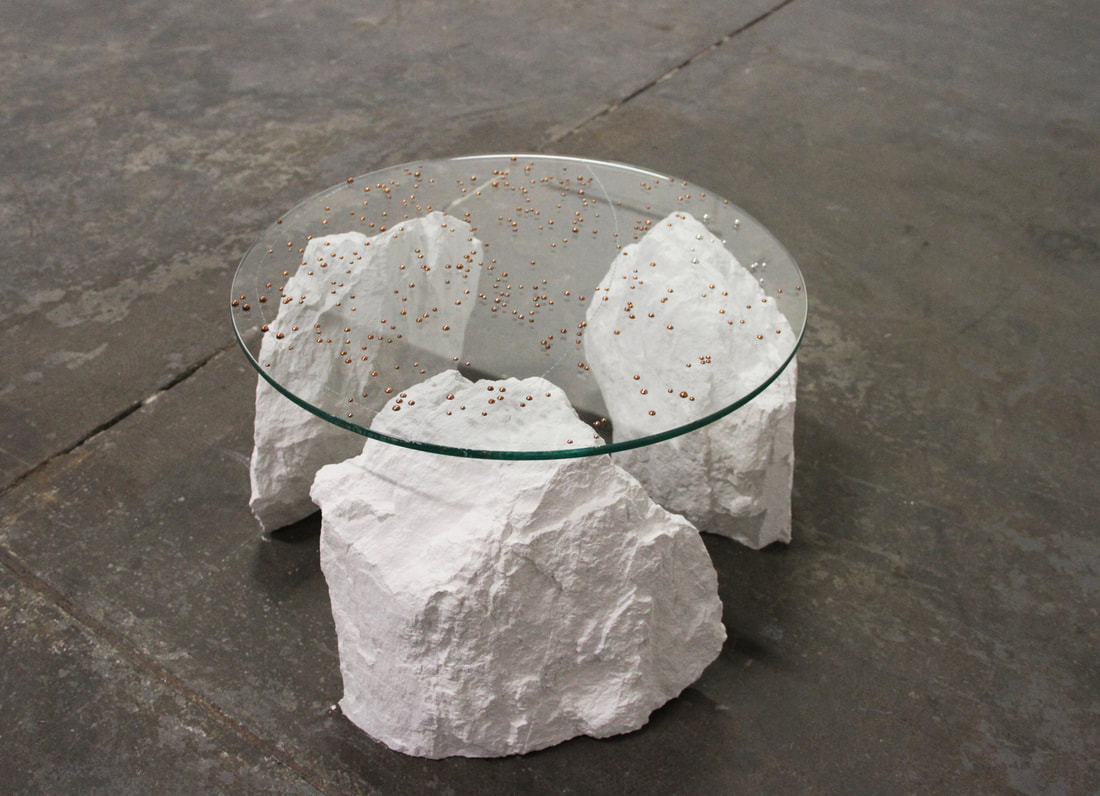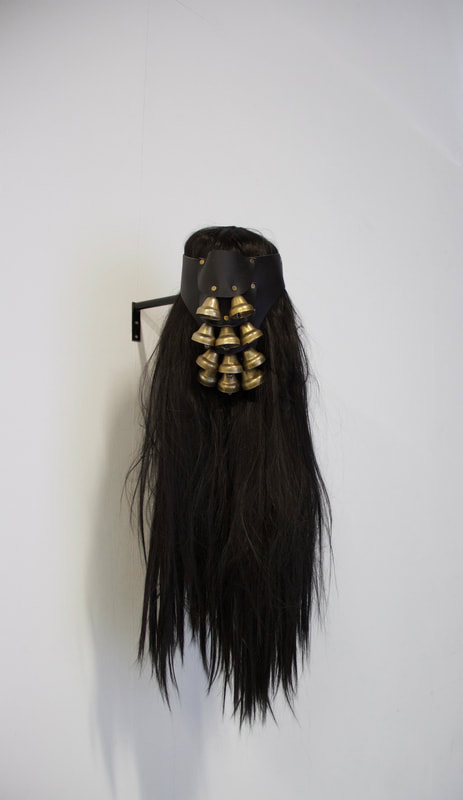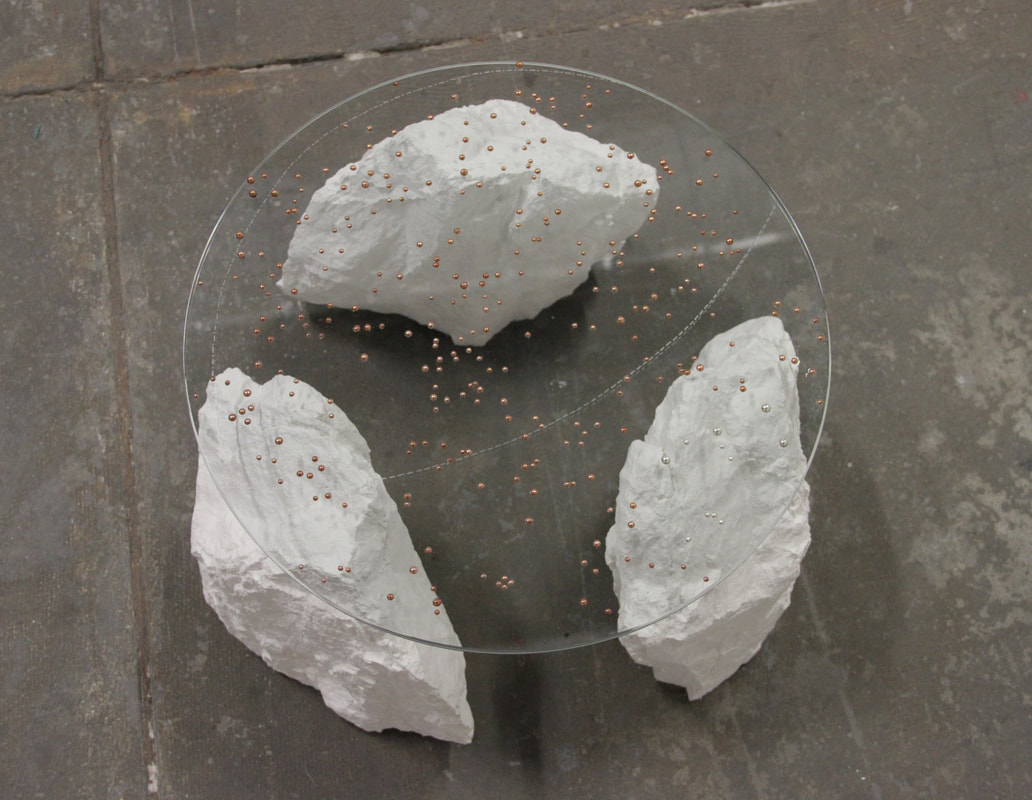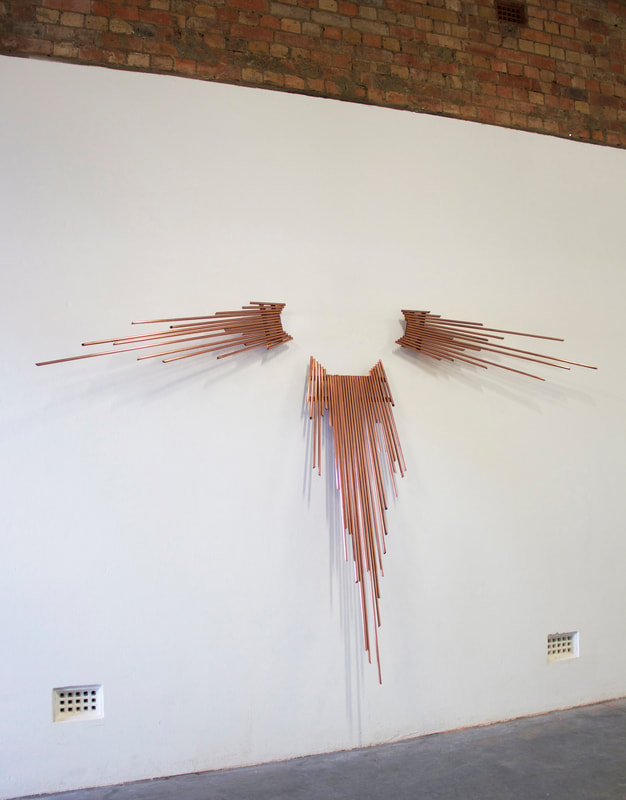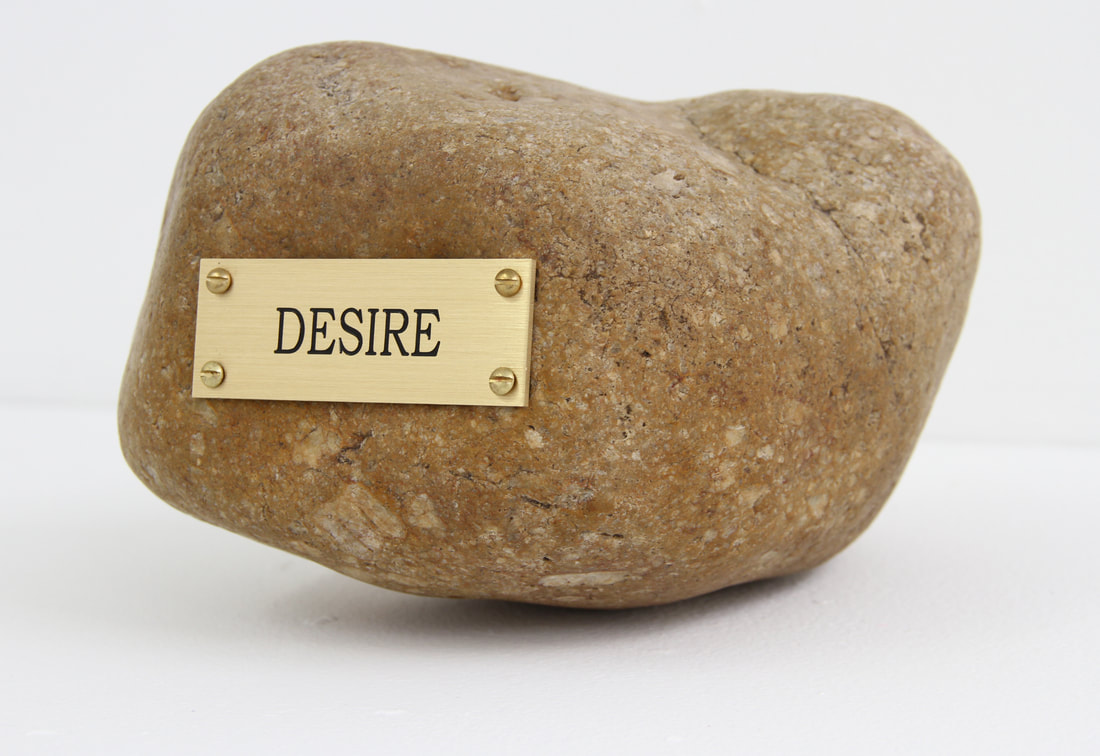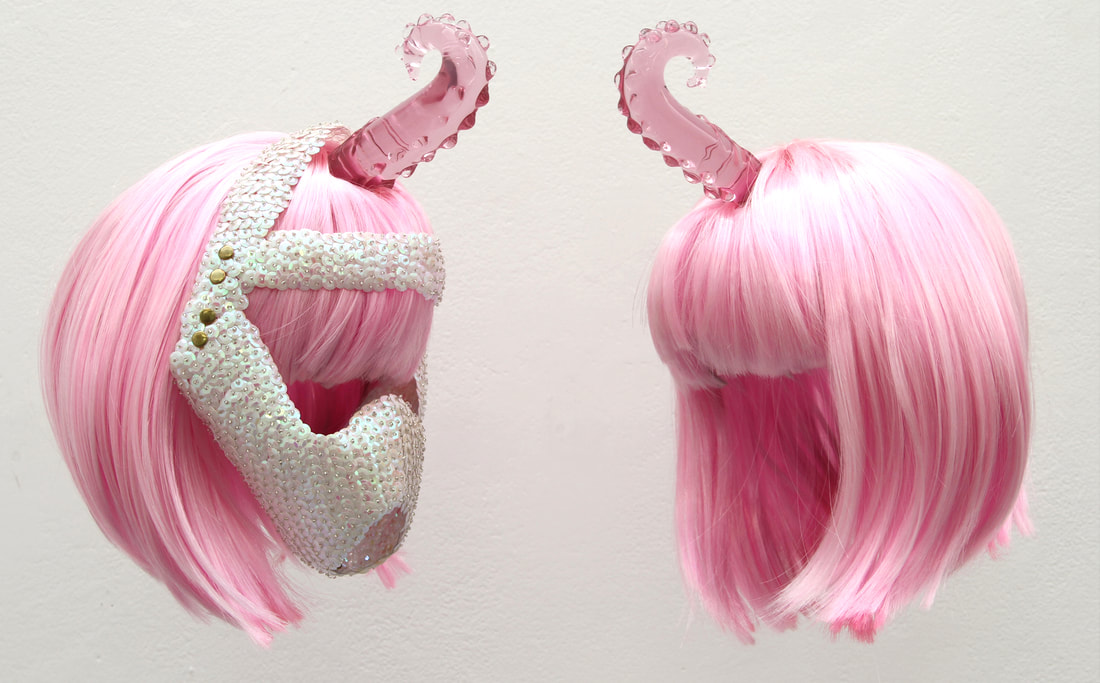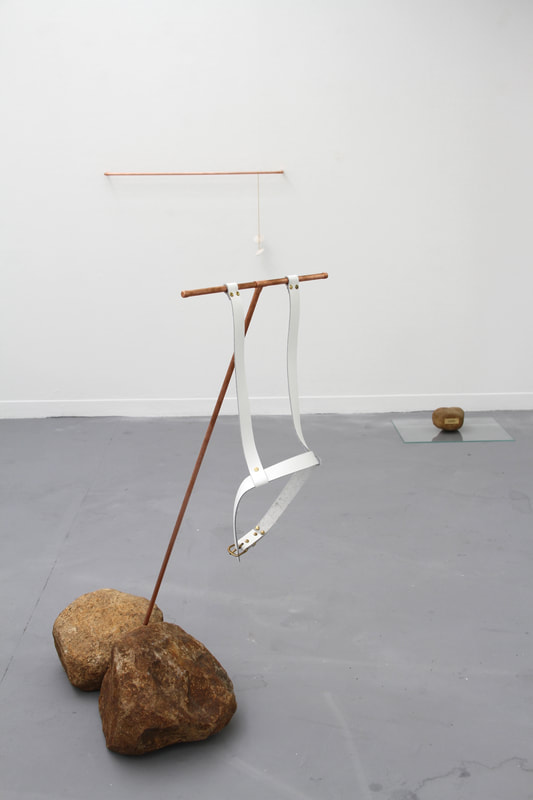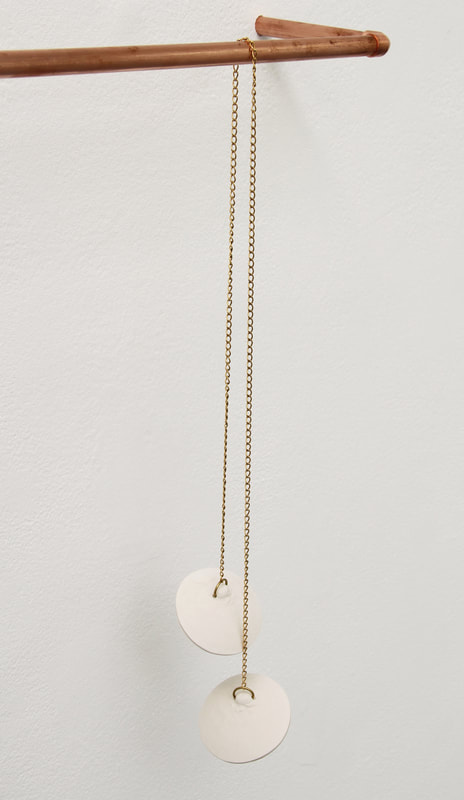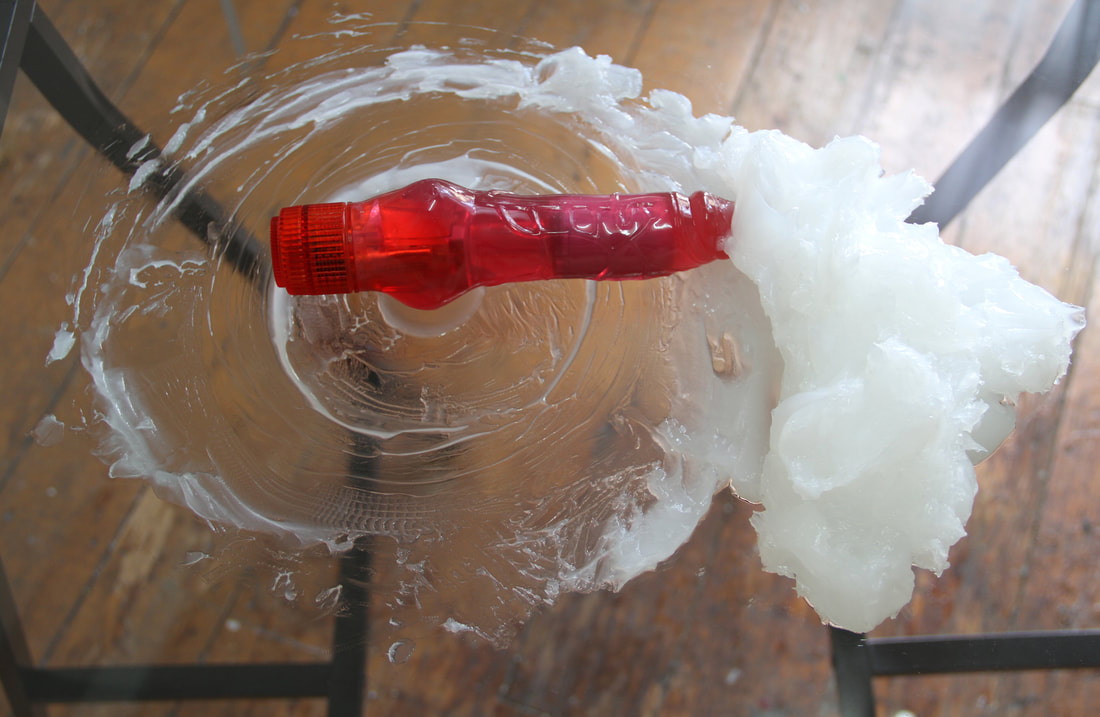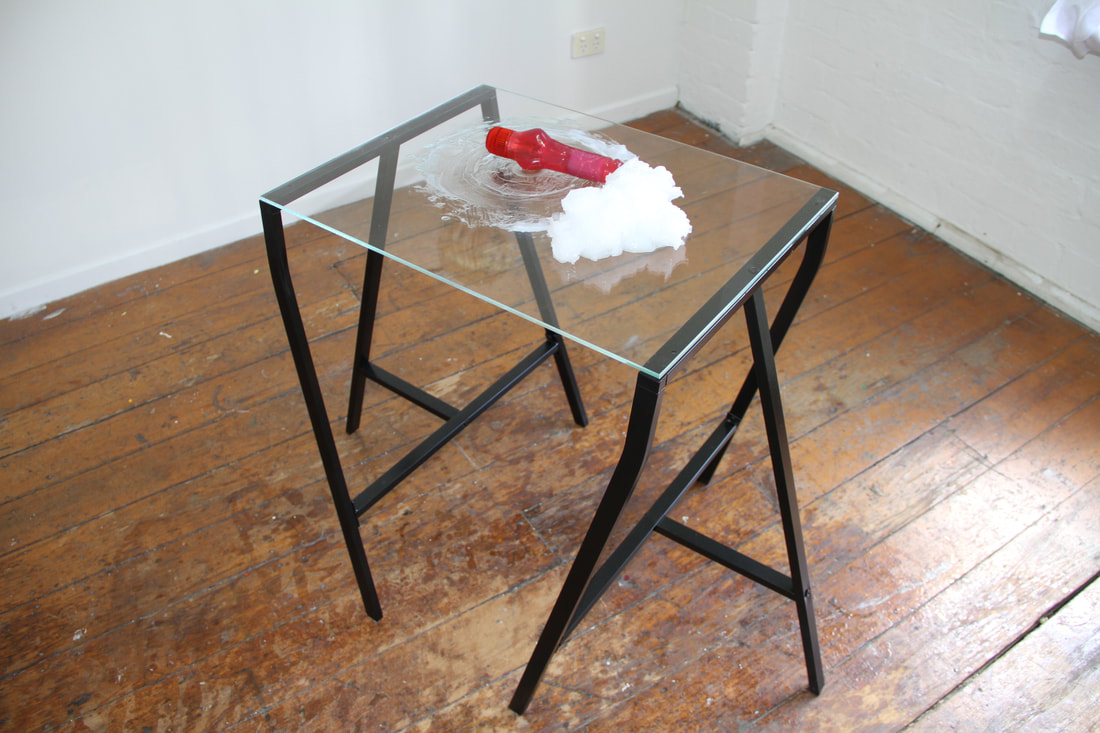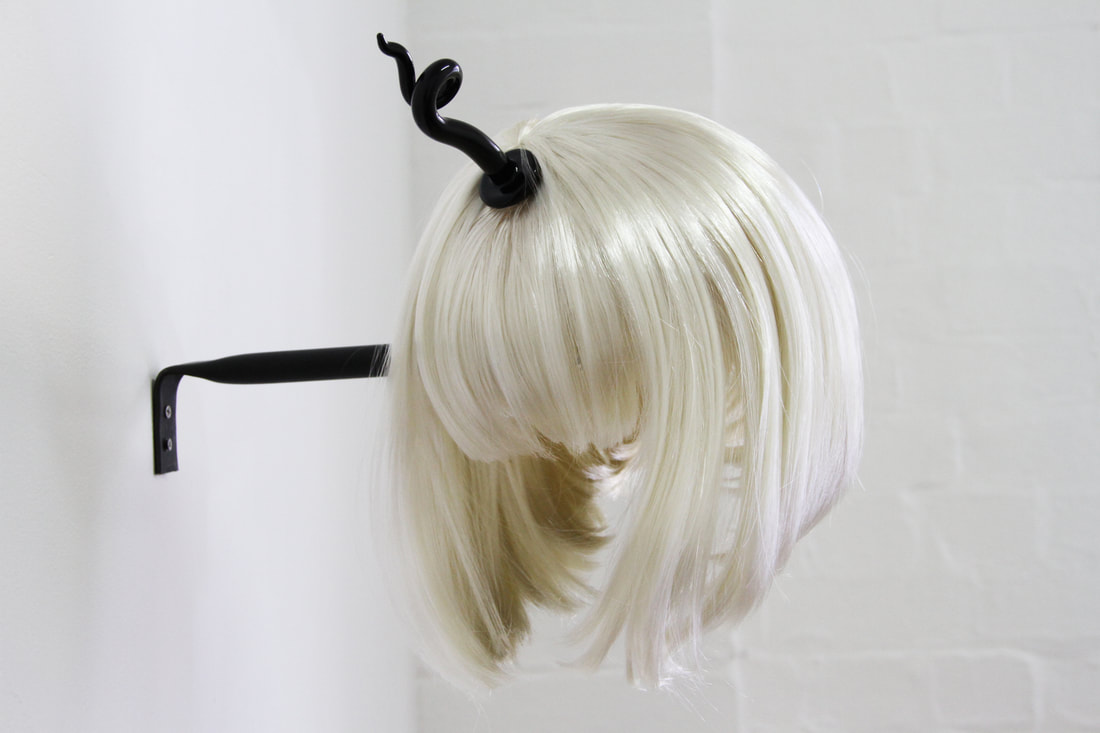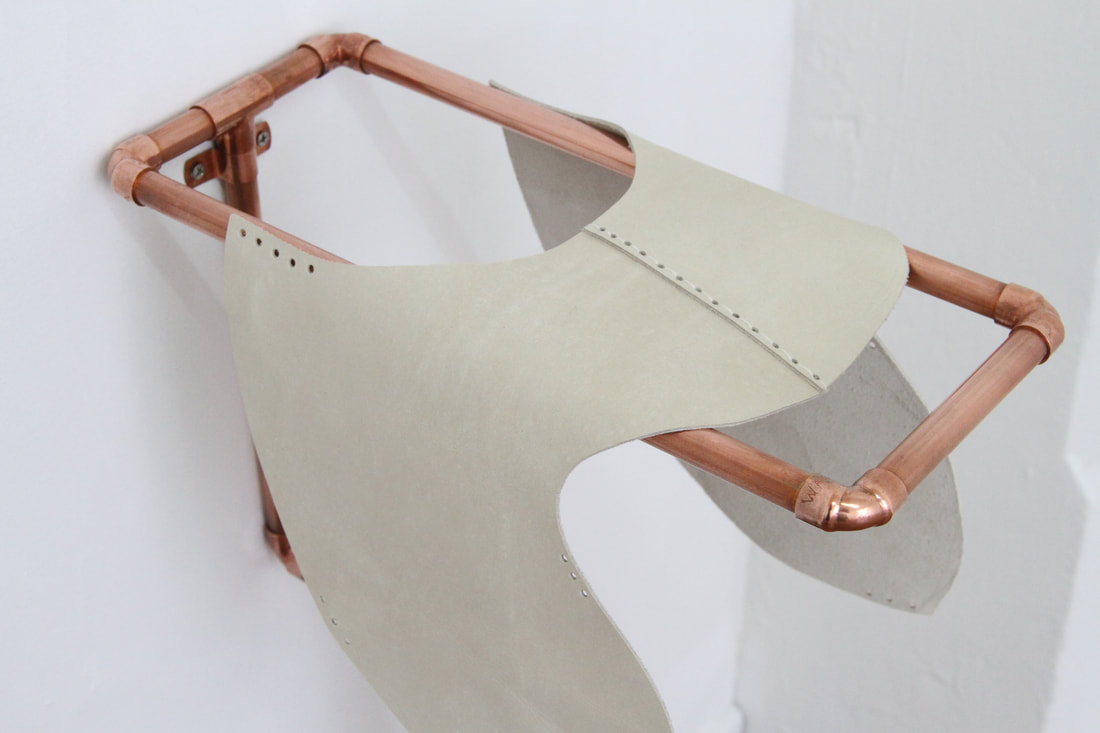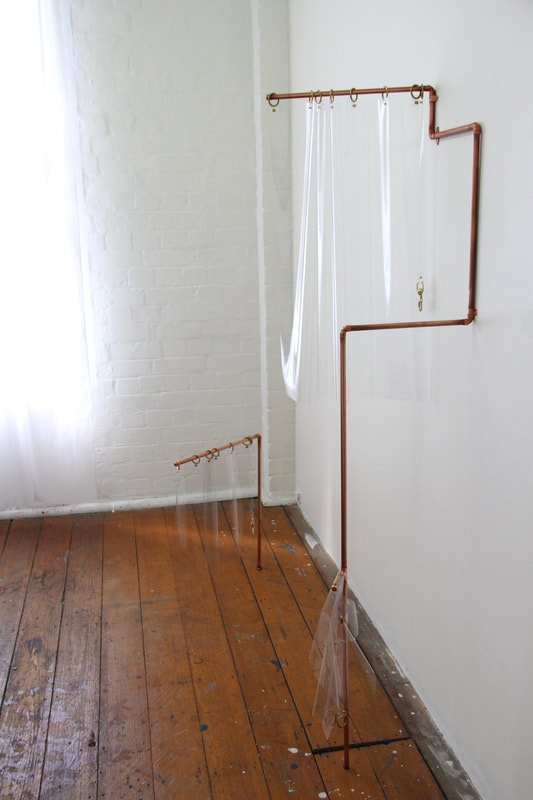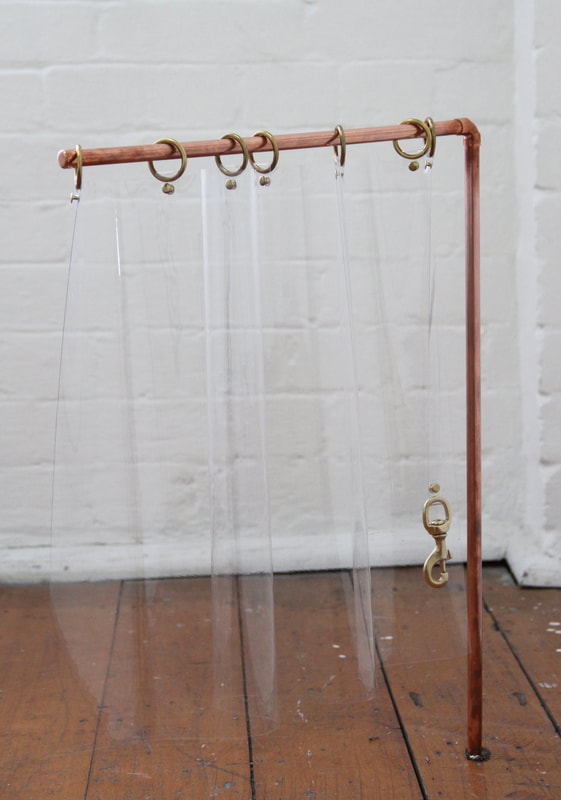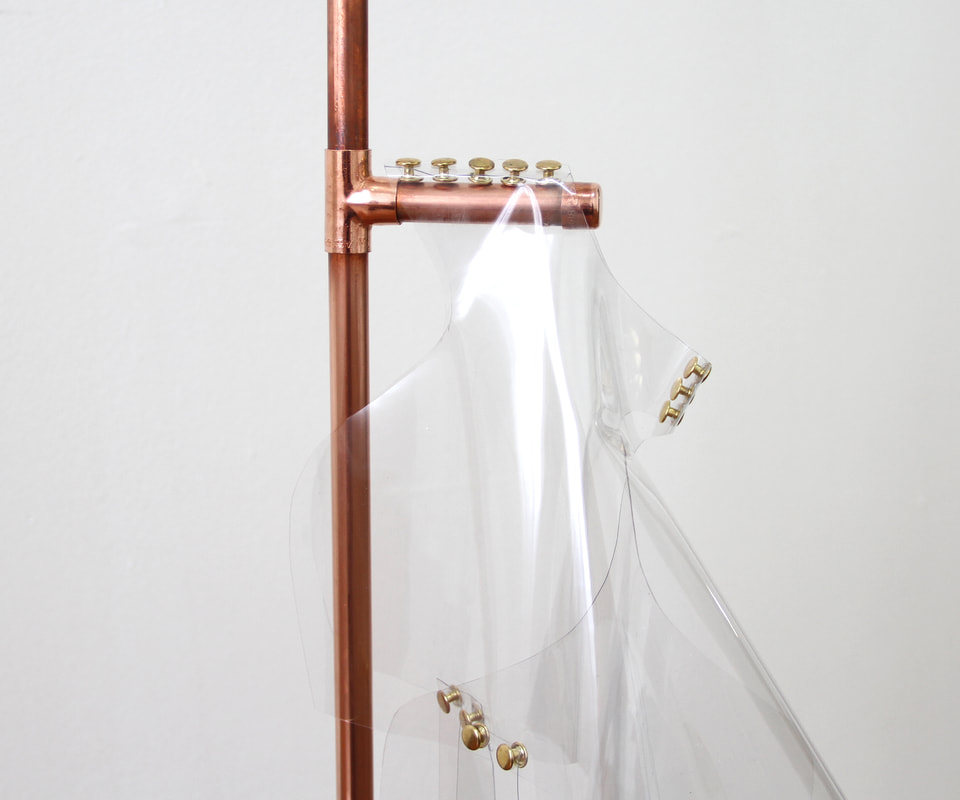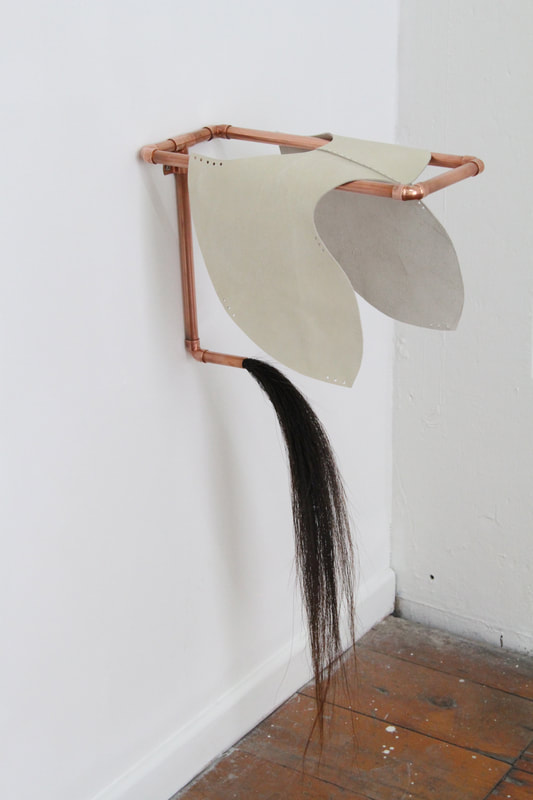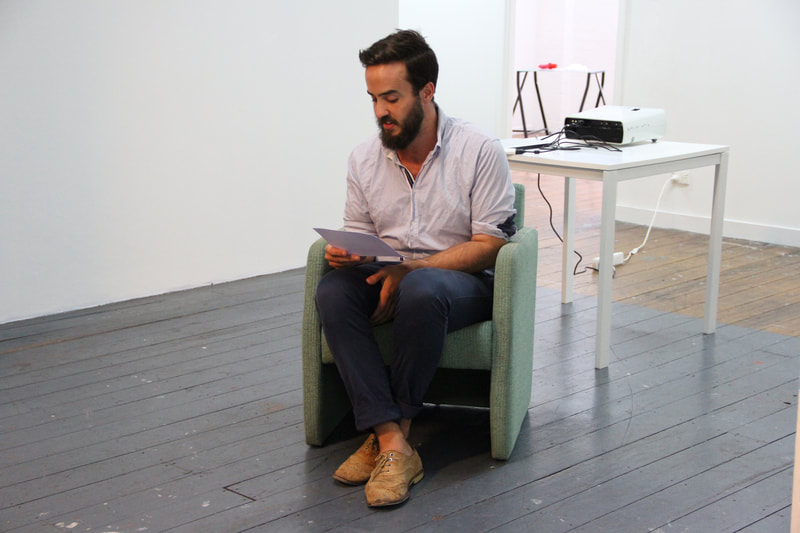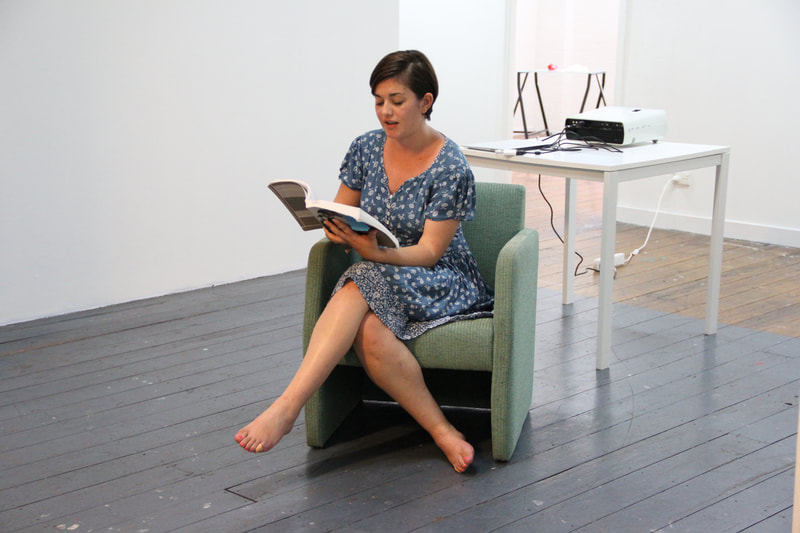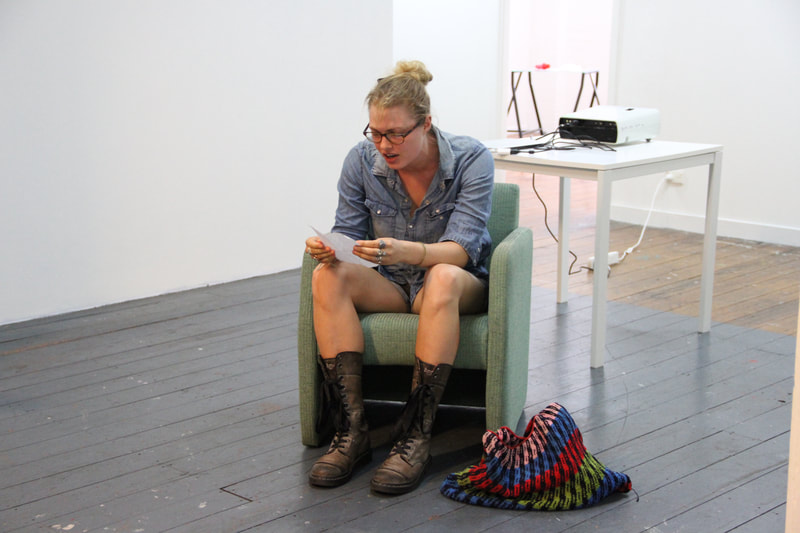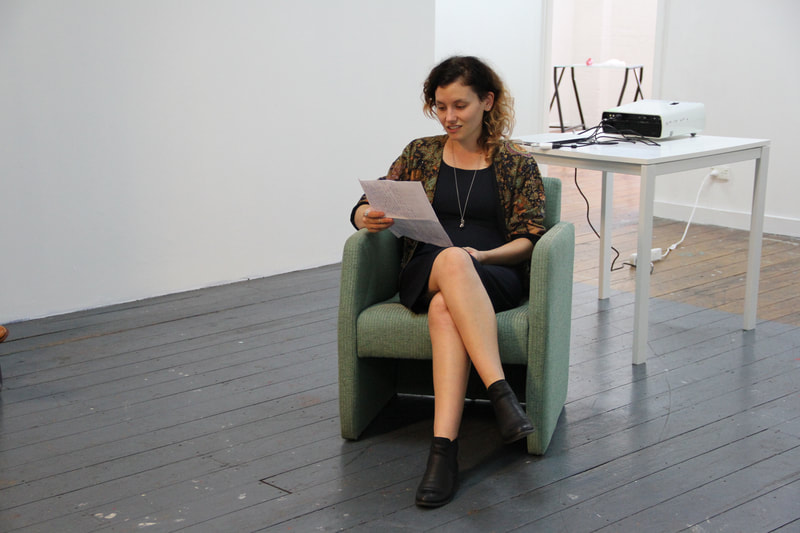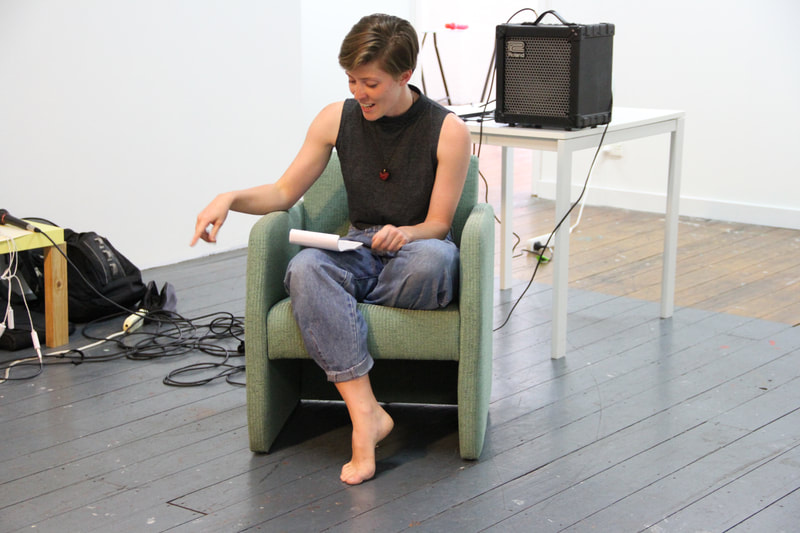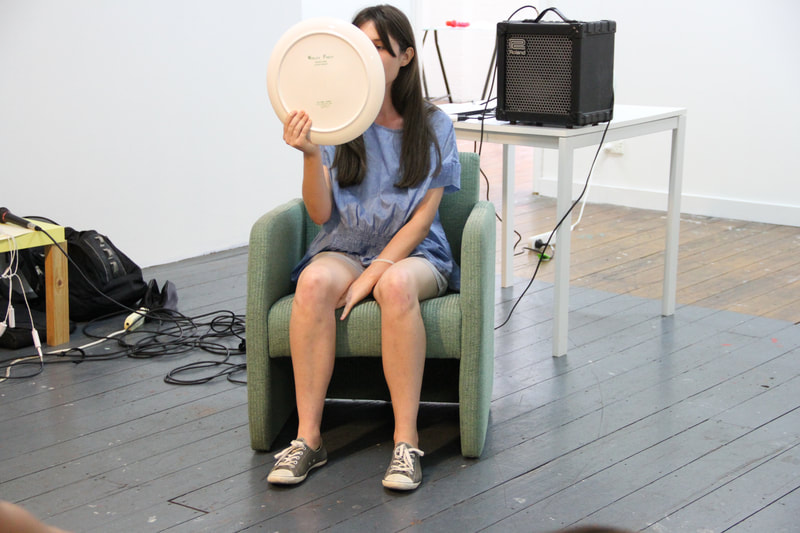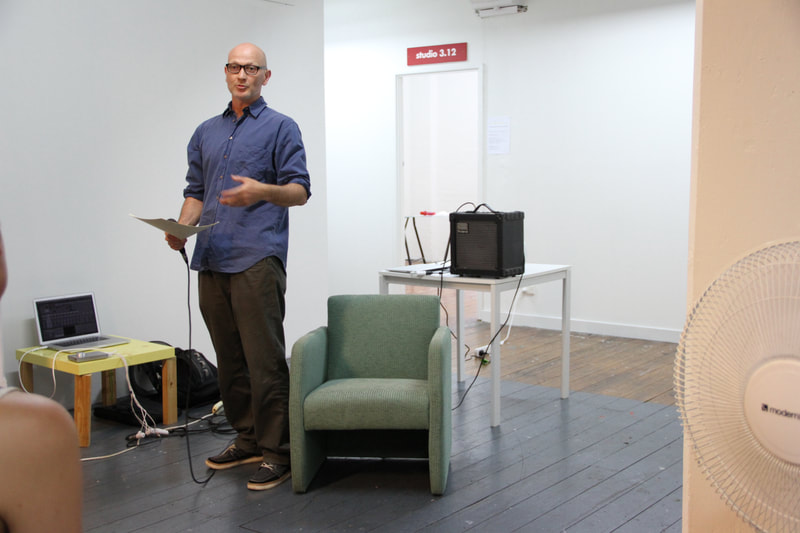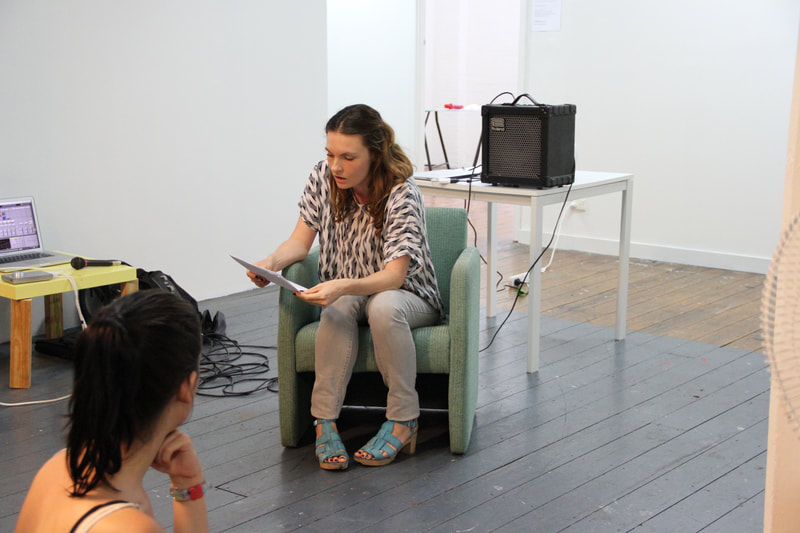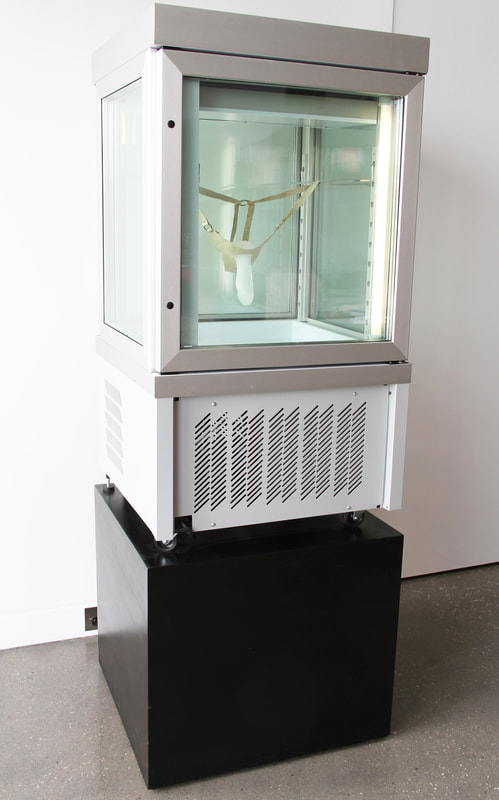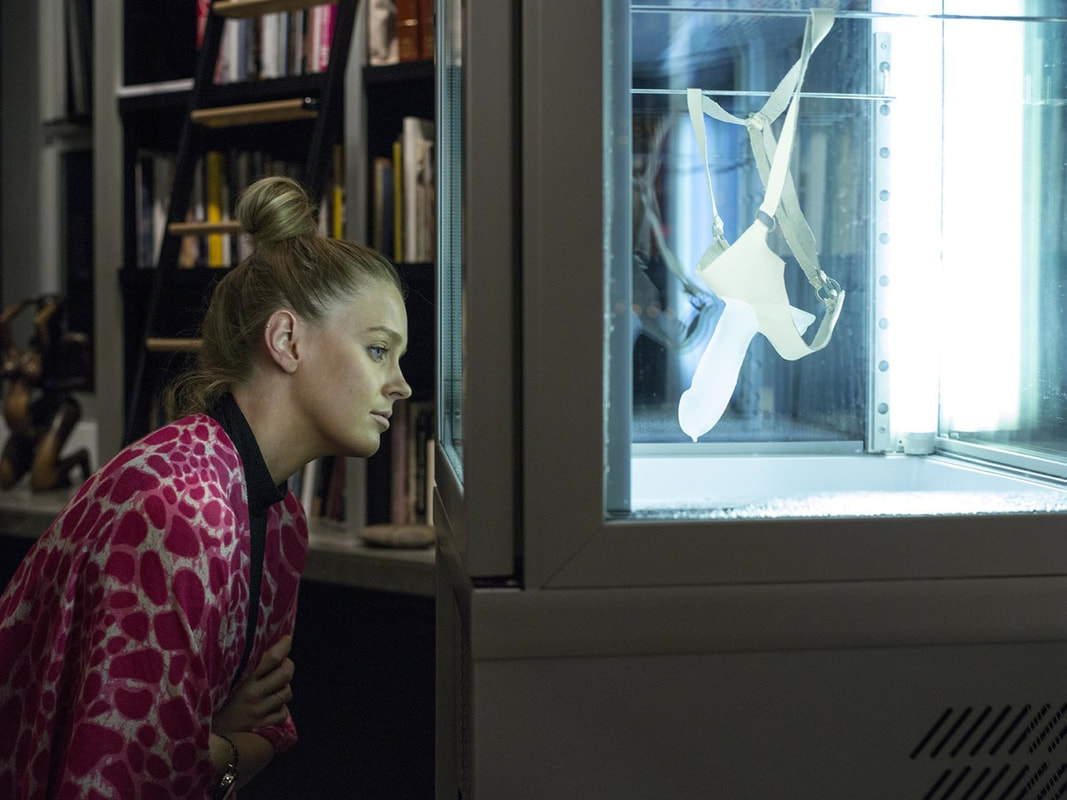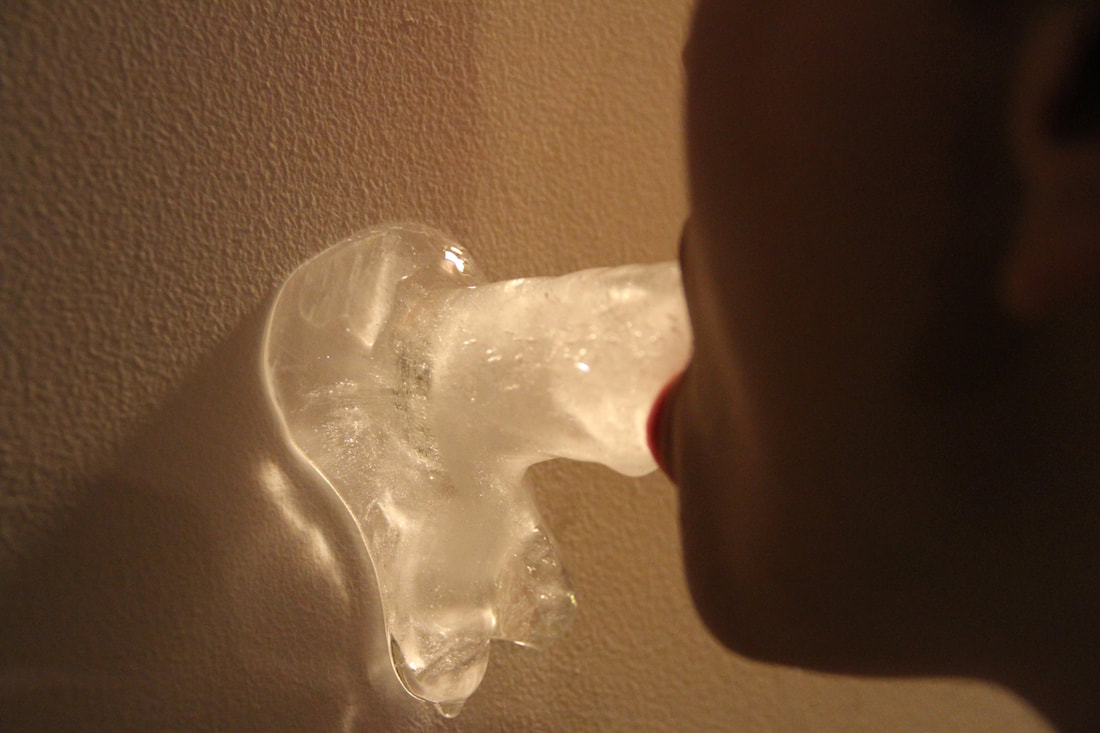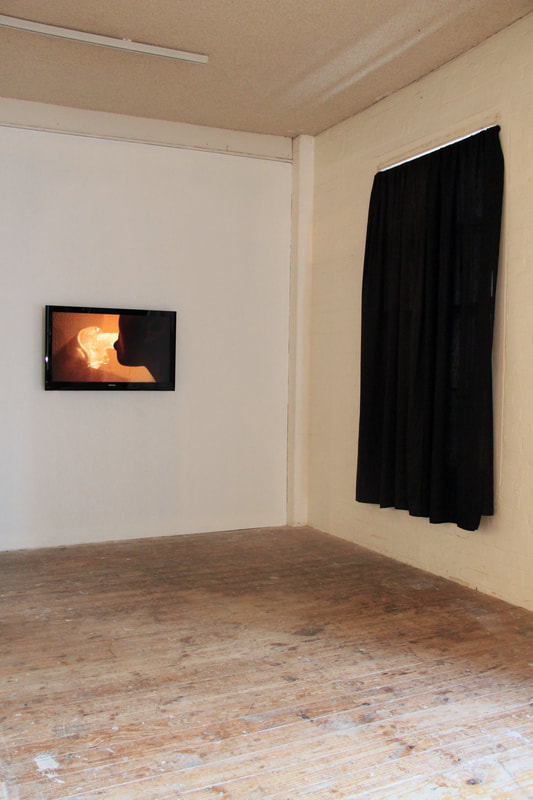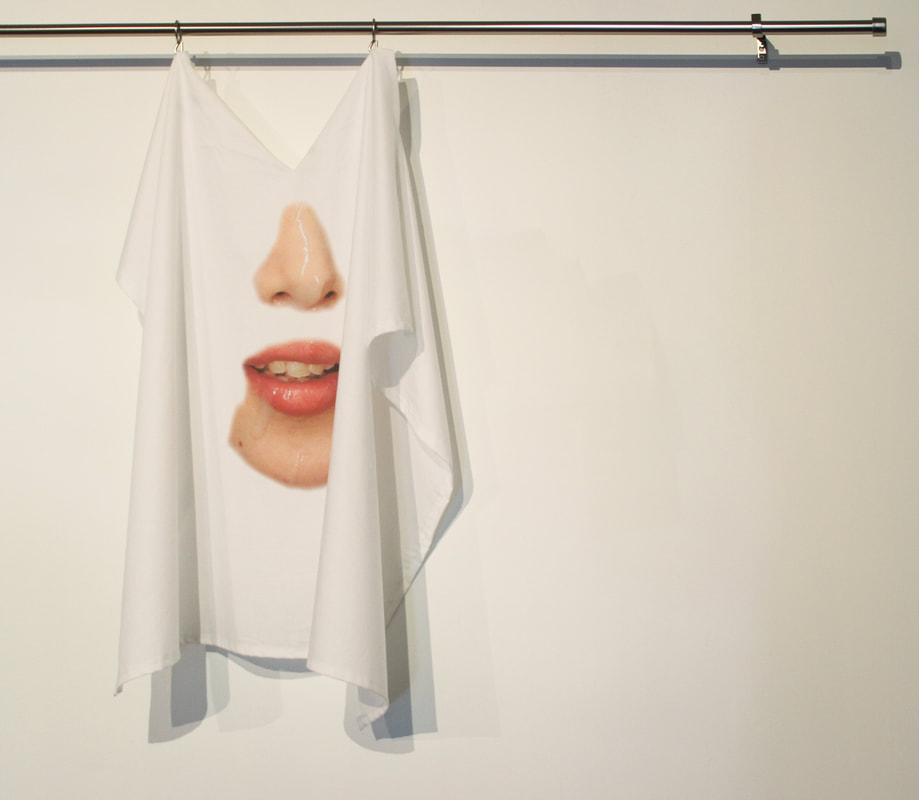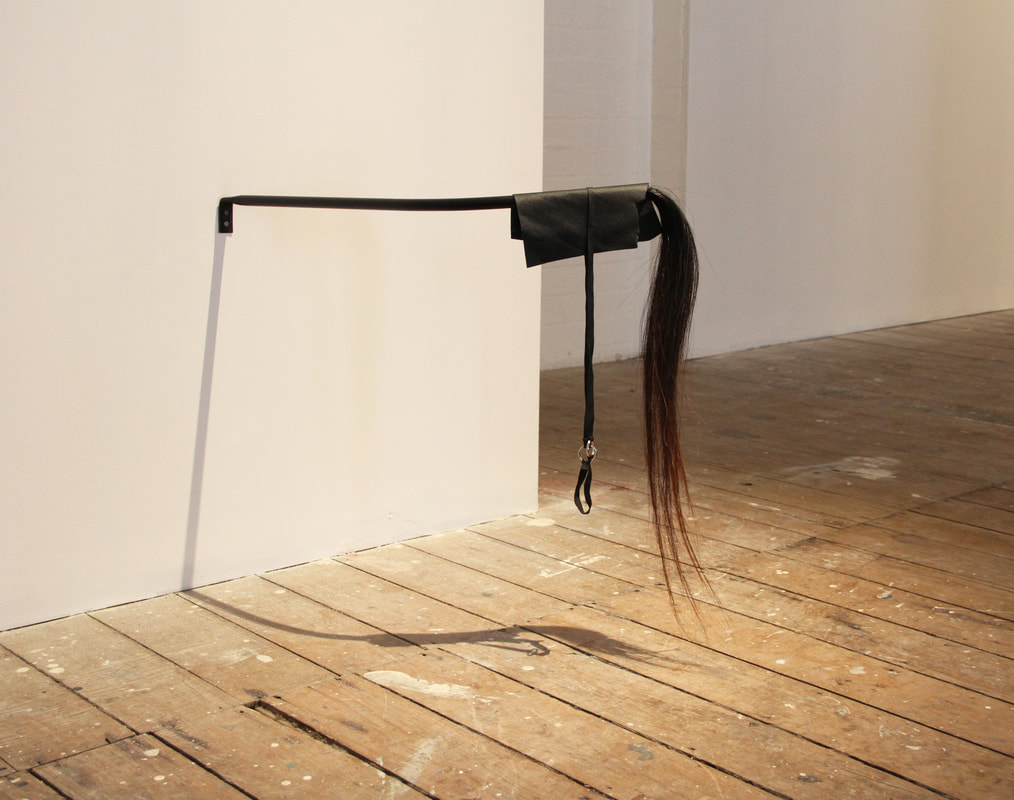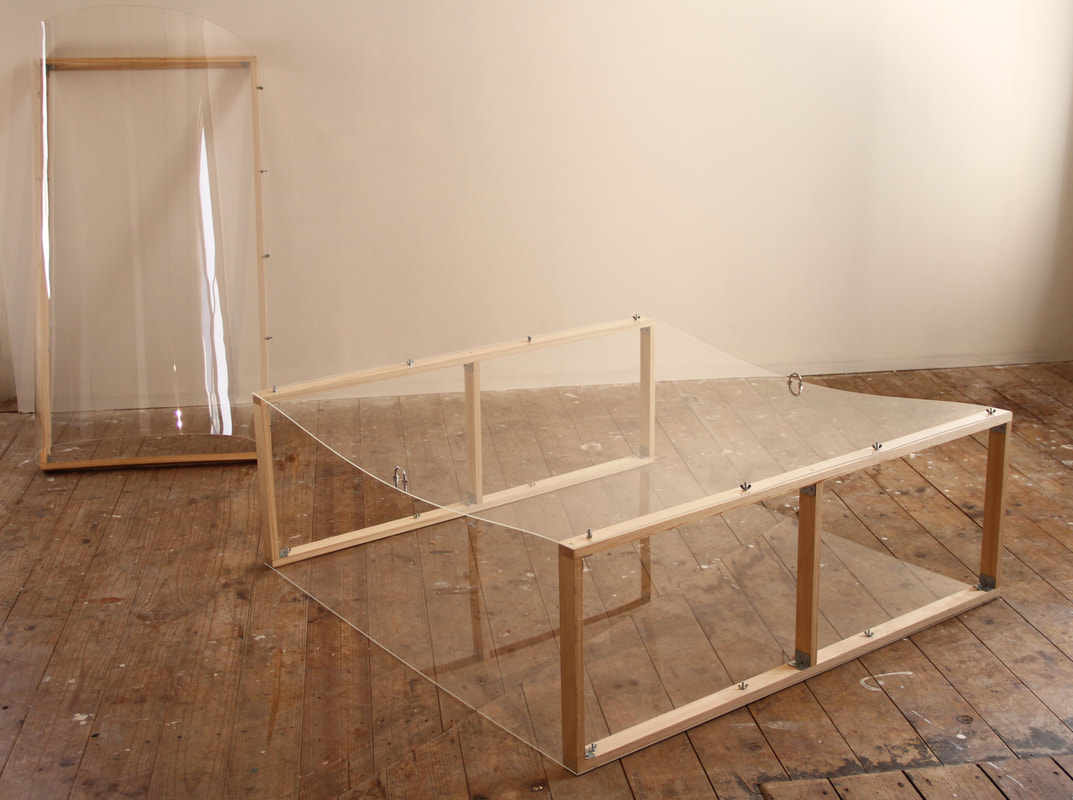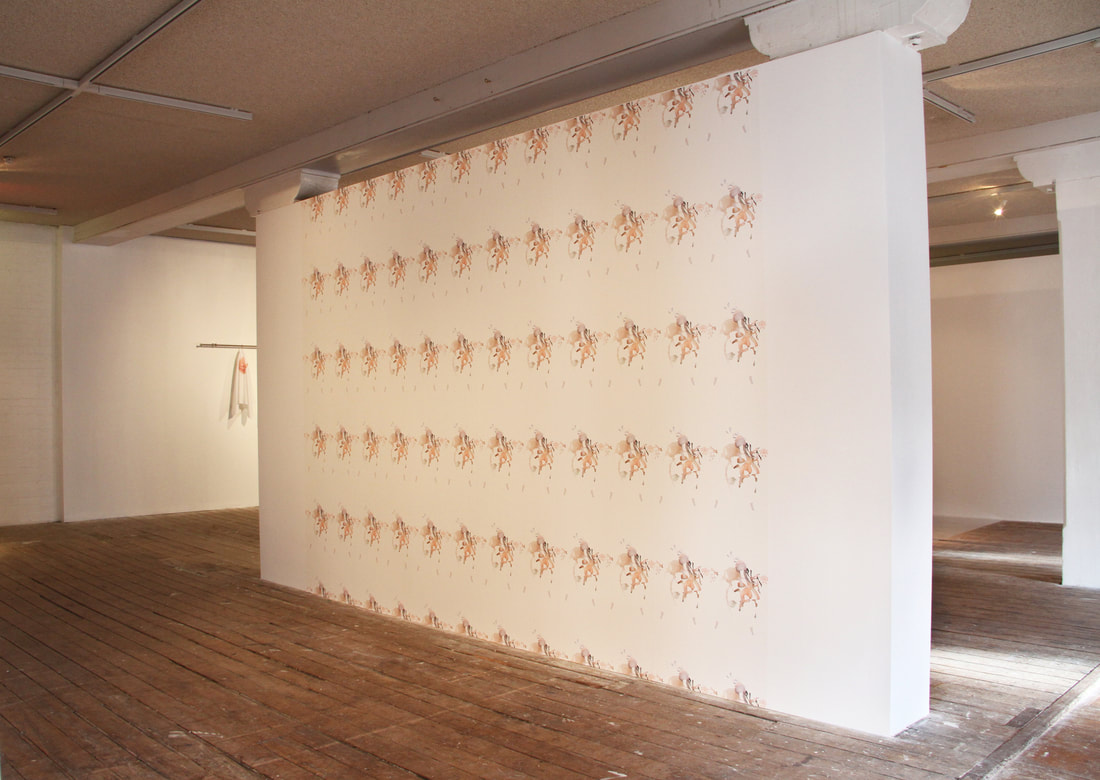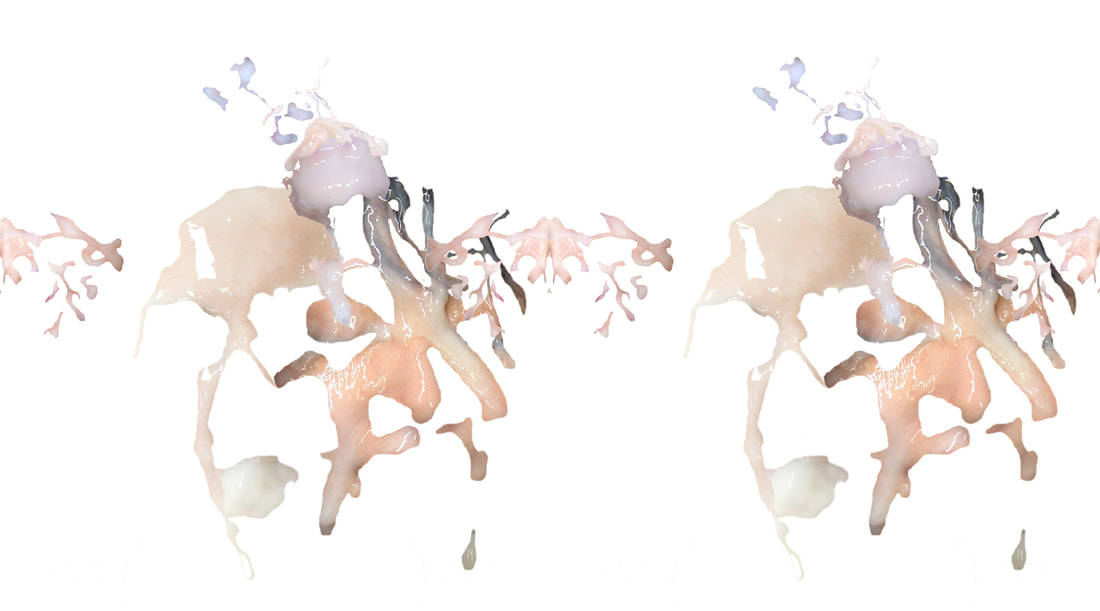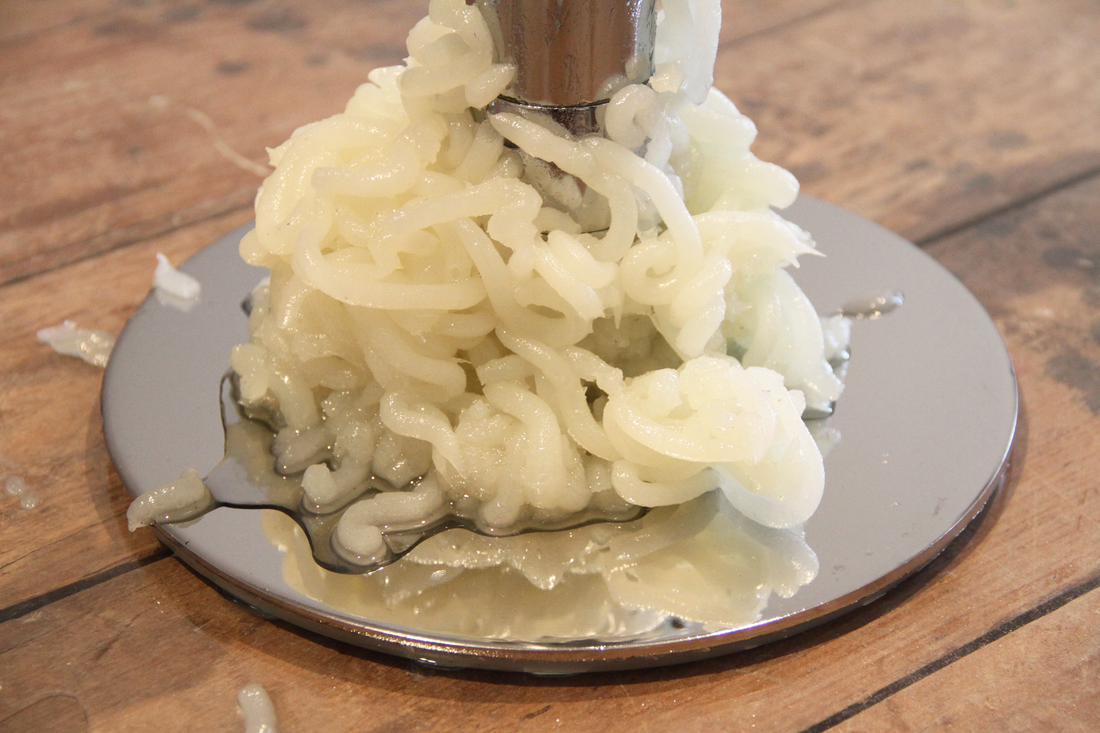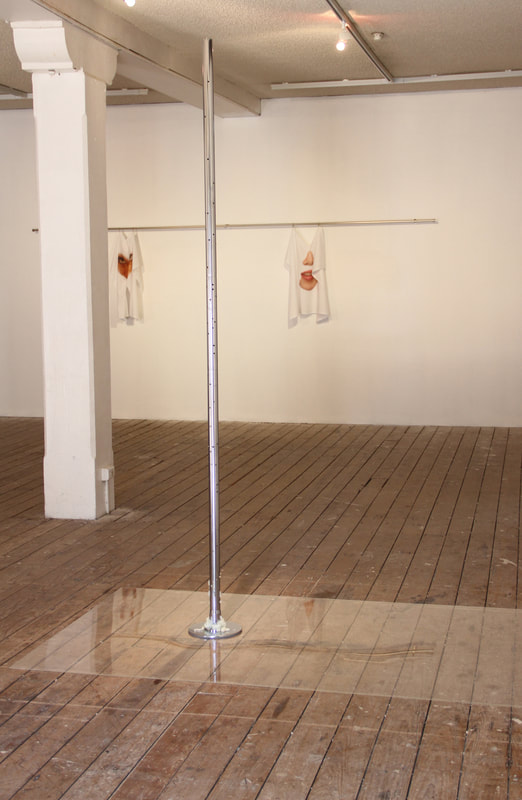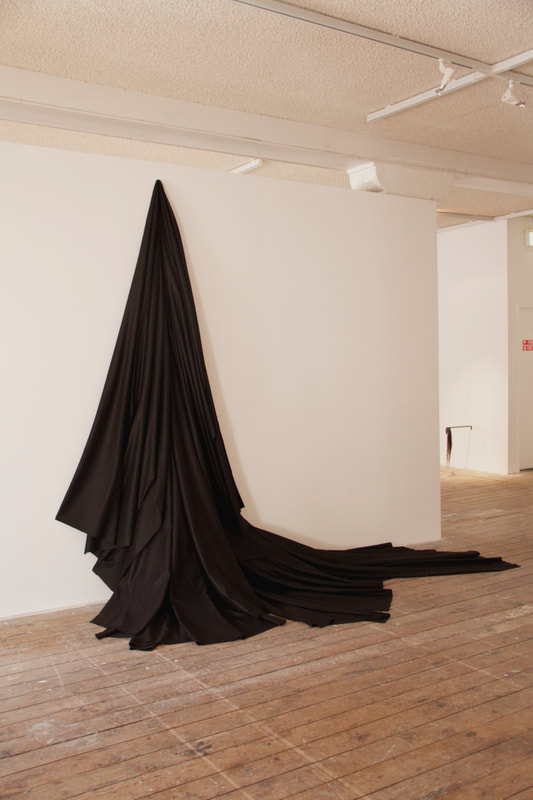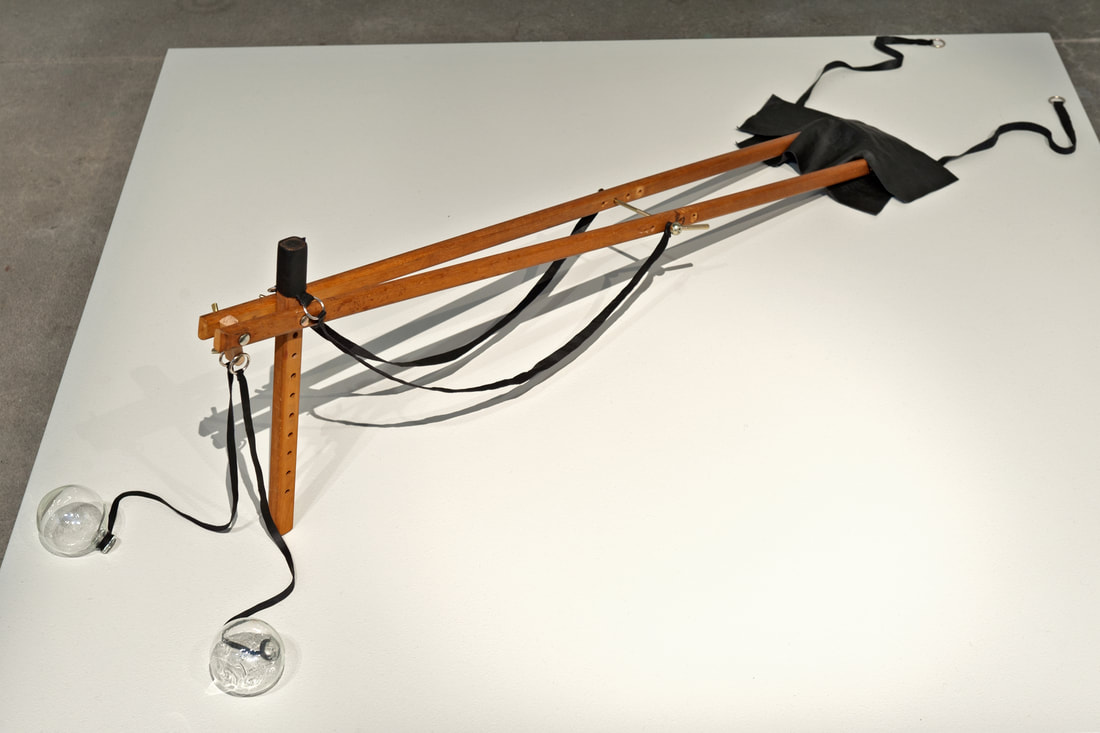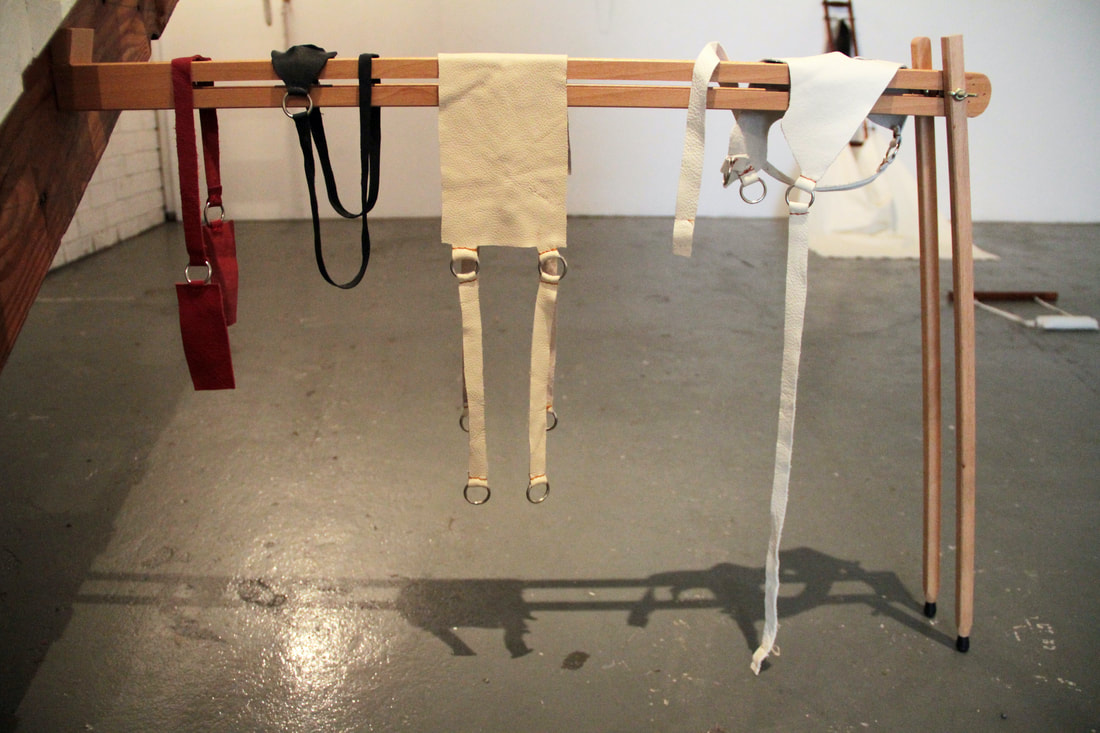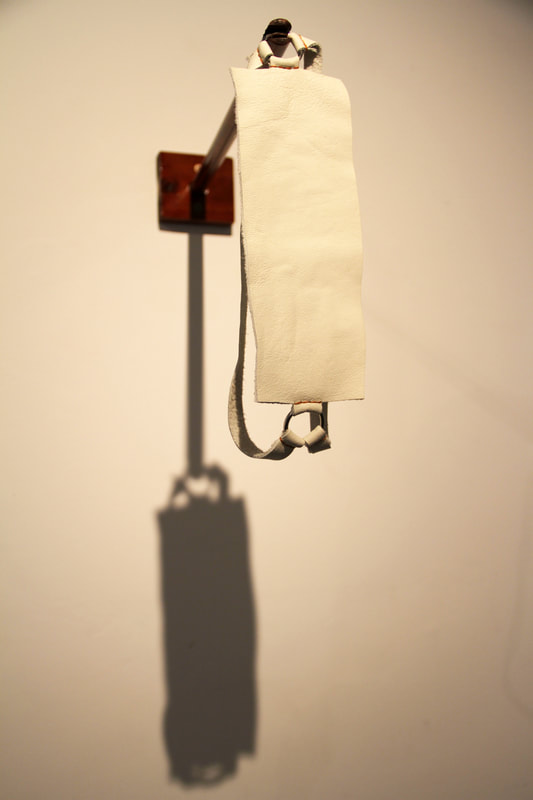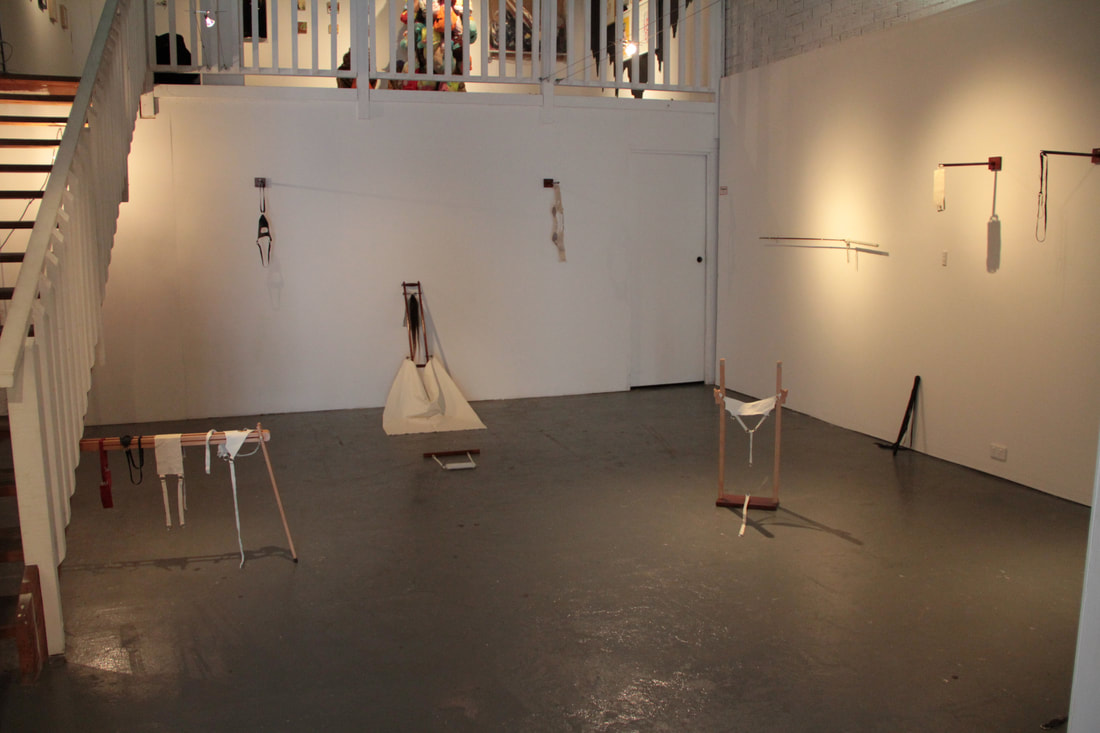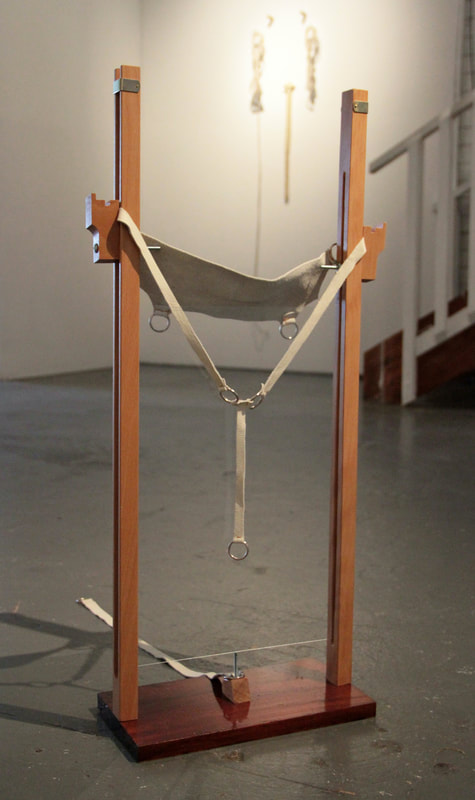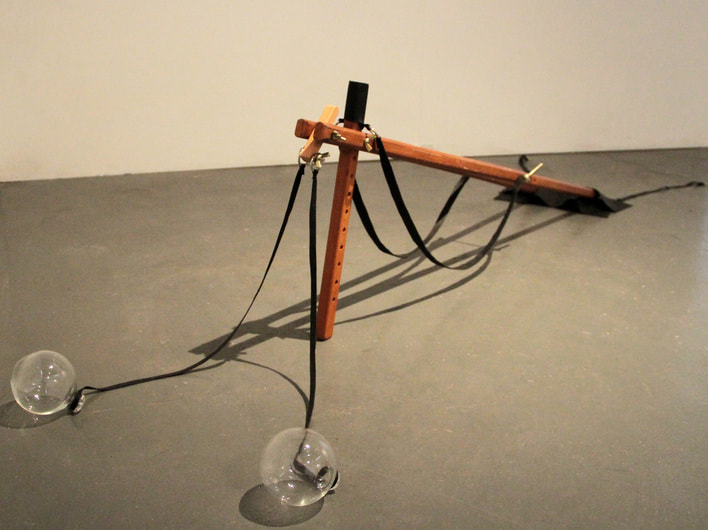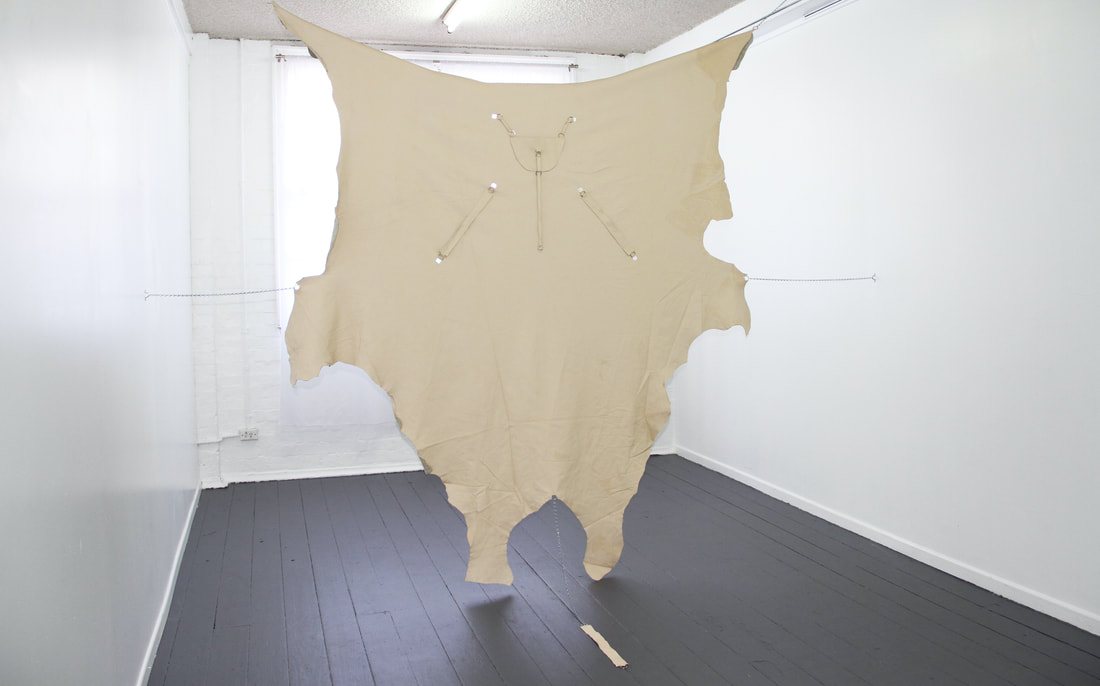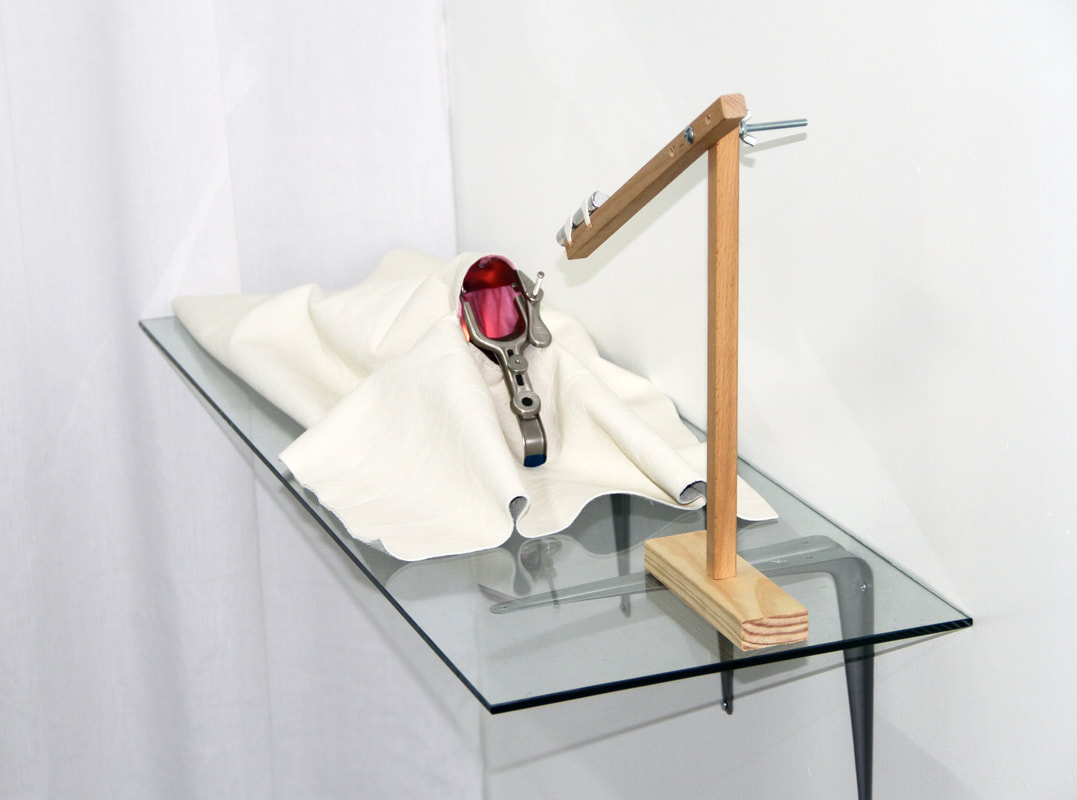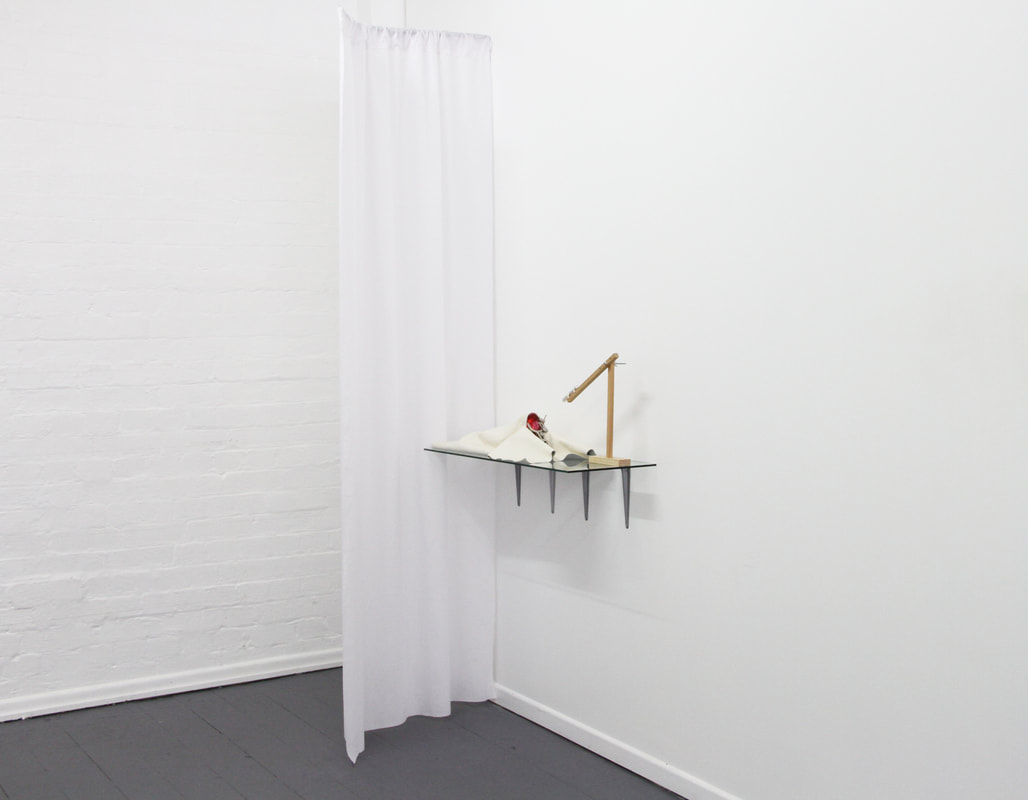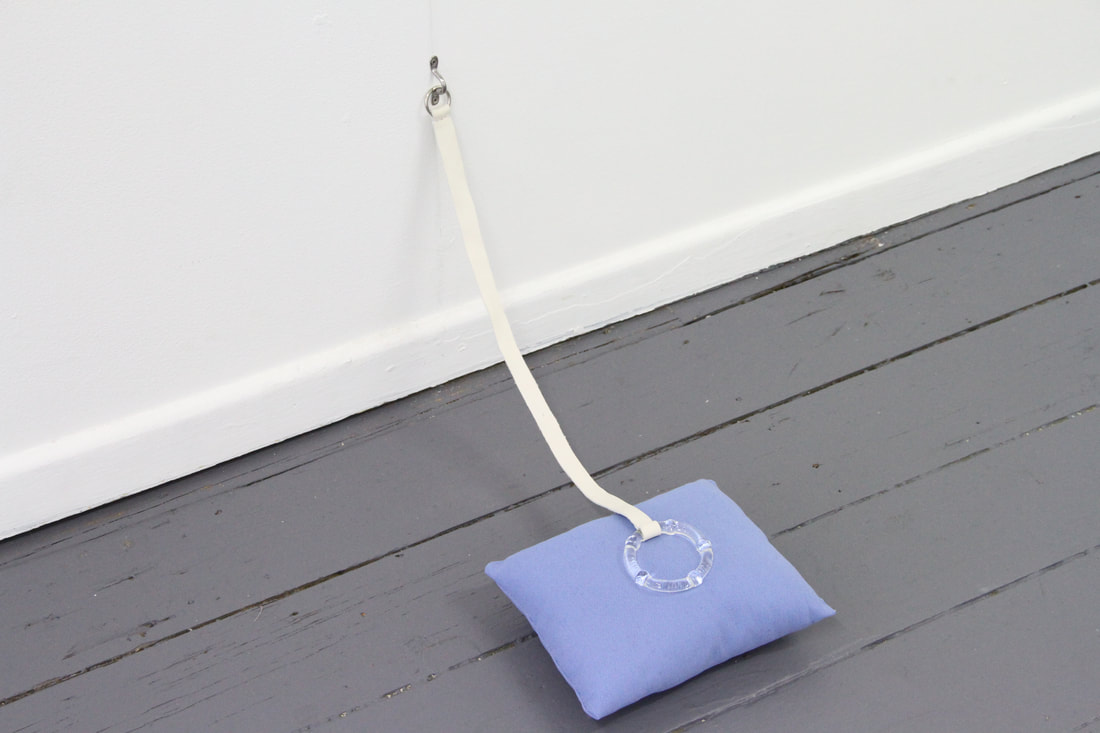|
Anastasia Booth crafts objects as apparatus or flawed erotic subject. By interleaving the languages of Freudian fetishism, kink, dark fantasy and personal anecdote, she ponders, can the artist as an agentive figure fight off gendered limitations and her own sexual failures. The dialogues she dabbles in can be problematic and contradictory, where no real answer is forthcoming.
|
Sometimes, fetish strategies of partialism, mimicry and projection are used with subversive intent - acting as agentive inscription to pry apart historic formulas - but more often than not, the artworks emerge from poetic mishap. Leather, glass, lustrous metals, ready-made sex toys, kink environments, timber, hair and lube inspire dysfunctional apparatuses that build perplexing relationships. Situated in a liminal zone these works engage with the imitative fragment and confuse it with the veritable subject. A trace of material recalls the erotic body despite any prior purpose, the benign and seemingly innocent surface enacting pleasure and moral consequence. As props for an illusory narrative, they become the site of psychological projection, our interaction inherently phantasmic. Interestingly, the simulation can fail when the objects are unable to sustain the desires being forcibly grafted onto them. There is great potential in this, the slippage of the personal ideal as arousal becomes absurd and impotent. These forms sit in counterpoint to Anastasia's refined, decoratively sumptuous sculptural and performed embodiments. Anastasia enamoured with ancient and historic figures - for their ribald, queer or monstrous qualities - situates herself in their place recreating their forms and acts artistically as a process of dialogue and liberation. Anastasia lives and works in Brisbane, Australia. She refined her craft at the Queensland University of Technology, completing her Practice-led Honours and Doctoral study. Her work has been exhibited nationally, including projects at The Perth Institute of Contemporary Arts, Institute of Modern Art, Museum of Contemporary Art, University of Queensland Museum, Griffith University Art Museum, Milani Gallery CARPARK, Screen Space, The Australian Experimental Art Foundation and was artist in residence at Metro Arts and Outer Space. She also designs and delivers workshops, as well as public programs in museums and galleries. |
|
Teresa (2016-2018) in Ecstacy: Baroque and Beyond and The 66th Blake Prize | 2017 and 2021 | The University of Queensland Art Museum (Brisbane) and Casula Powerhouse Arts Centre (Sydney)
|
Teresa is a reconstruction of the brass aureole from Gian Lorenzo Bernini’s sculpture The Ecstasy of St. Teresa. Divorced from the stricture of the sepulchral colonnade, the simulation of divine rays unfurls as a levitating silhouette. Formally abstracting Teresa in these terms, looks to the reductive gaze of the inquisition and her role as a co-opted conductive transmitter for the divine. Coppers crystalline structure and capacity to harness thermal energy denotes her bodies role as a converter, and how her personal faith - as evidenced in her writing - coalesces into ideology. In its construction, the arduous ritual of hand abrading copper - frottage - sits within contemporary conceptions of artistic process as agentive inscription, with the artist acting as proxy by reconceptualizing corporal mortification. These toils embody a cross-history dialogue between practitioner and saint.
|
|
The Beast of Intimacy's Burden | 2020 | Wreckers Artspace, Brisbane
The objects in Beasts of Intimacy’s Burden recline at the cross-section of wounded desire and lavish materiality. Their lustrous surface a facade that conceals their structural weakness and an ephemeral disposition. As assemblages of Baroque sensibilities, fetish labour and contemporary sexuality they are chimeras. Some think they are furnishings, some sex toys and others architectural surfaces. Between them, they might have different opinions of themselves but they share the distinct sentiment of aniconic vehicles for erotic lack.
|
|
Summer Residency Showcase, Tracking a Lineage: A collaboration with John Booth | 2020 | Outer Space, Brisbane
Tracking a Lineage was an archival installation that brought together a range of older works by the artist and the paraphernalia from her father’s research-based recreations of ancient Greek pottery. Created in Queensland in the 80’s using native Australian clays and appropriated ancient techniques, her father’s work sought to correct errors in purely theoretical research by implementing Archaeology in Action practices to better illustrate the construction of Red-Figure pottery. Upon visiting museums in Greece and London for her personal research into Sigmund Freud's antiquities collection and the Greek urn that was used to intern his ashes (later destroyed by vandals). The artist observed that her father’s hybrid pots were a 1:1 – almost perfect – simulation of the ancient remnants of this style. This created an appreciation for her father’s expertise and a reconsideration for how her father’s methods have shaped her as a contemporary artist. Yet, this childhood history also creates tension, as it plays into the more absurd and contested fragments of Freud's theories that conflate the biological father with the authoritive title father and the kink honorific daddy. |
Anasyrma The Abyss curated by Naomi Evans | 2019 | Griffith University Art Gallery, Brisbane
Exhibiting artists | Tony Albert, Hany Armanious, Gordon Bennett, Krista Berga, Anastasia Booth, Juan Davila, Karla Dickens, Chantal Fraser, Karl Fritsch and Francis Upritchard, Ian Haig, Louise Hearman, Gordon Hookey, Natalya Hughes, Emily Hunt, Ramesh Mario Nithiyendran, Robert Pulie, Dieter Roth, Carolee Schneemann, Tim Schultz, Tyza Stewart, Sophie Takach, Wart, Jemima Wyman, Paul Yore
|
Intimate Immensity curated by Amy-Clare McCarthy and Katherine Dionysius | 2019 | Outer Space, Brisbane
Adopting the formal apparatus of the star chart, here, instead of being an index for a historical event or functioning as a cultural mnemonic apparatus, the celestial chart is a hybridised abstraction of celestial architecture. Unrelated pixel points form an act of celestial apophenia, emulating the associative process by which classical constellations and their 88 contemporary reformations were made. The artist mythologises their history and creates 'misery monuments' that honour and immortalise personal failings.
|
Exhibiting artists | Ali Bezer, Anastasia Booth, Sundari Carmody, Kinly Grey, Jenna Lee, Lisa Sammut
|
Anasyrma performance at Netherworlds curated by Amy-Clare McCarthy & Kieran Swann | 2018 | Spring Hill Reservoir, Brisbane
|
Netherworlds curated by Amy-Clare McCarthy & Kieran Swann | 2016/2017 | Firstdraft, Sydney and Seventh Gallery, Melbourne
NETHERWORLDS are grappling at the corners of the everyday, carving dark sanctums thick with power, love, and potential. Through object and performance, this exhibition claims space between contemporary art and the spiritual. Informed by emergent contemporary relationships between ideas of magic, mysticism, cultural ritual, and art making, NETHERWORLDS reflects on theories of early performance as invocational ritual, and prehistoric art as sympathetic magic (first proposed by ethnographer Richard Andree). Drawing on ideas of communitas, perceived and actual power, and the exoticised ‘other’, NETHERWORLDS foregrounds contemporary perspectives on the crafting of safe space and the empowerment of diverse artists through ritual and talisman on creative contexts. |
Exhibiting artists | Naomi Blacklock, Anastasia Booth, Caitlin Franzman, Chantal Fraser, Clay Kerrigan, Blake Lawrence
Exhibition documentation | Dom Krupinski
Exhibition documentation | Dom Krupinski
|
Common Scold collaborative exhibition with Naomi Blacklock, curated by Amy-Clare McCarthy & Kieran Swann | 2018 | Bus Projects, Melbourne In the common law of crime in England and Wales of the 1500s (and as recently as the 1960s), women deemed to be ‘quarrelsome’ were secured in iron muzzles, or bridles, which inhibited the tongue. Considered a preventative measure, women were forced to wear these in public and led through the town. At different times a punishment for women accused of gossiping, inciting riots, and accused of witchcraft, the device was used for centuries to punish, humiliate, and silence women. Here combining their sonic and installation practices, artists Naomi Blacklock and Anastasia Booth draw on their shared investigations into the feminine body, the archetype of the witch, and the history of these devices - utilising ritual, the body, and other materials to consider the possibilities of agency and rebellion even when the tongue has been silenced. |
Collaborative Performance Anastasia Booth and Naomi Blacklock produced by people+artist+place. Star-Crossed Rivers was a performance outcome from a one-day collaborative intensive with year 10 students from Brisbane State High School | 2018 | South Bank, Brisbane
Contemporary artists, Naomi Blacklock and Anastasia Booth worked with year 10 students from Brisbane State High School to perform a contemporary retelling of the famous Punjab love story Sohni Mahiwal. Sohni Mahiwal is an old tale that centres around Sohni, a heroine who longs to be with her true love who lives across the river. In order to be with him, Sohni crosses the river each night using an earthenware pot to keep her afloat. However, one night her sister-in-law replaces the pot with a vessel of unbaked clay which dissolves in the water and causes Sohni to vanish. A tale told through movement and sound, this mesmerising performance spoke to universal notions of love and longing. Where the cascades of water and the blazes of the night sky were replaced with the lustre of mirrors and a bulwark of armour clad bodies overseeing the lovers poetic tragedy. |
|
Preaching to the Perverted | 2016 | Metro Arts, Brisbane
Taking its cue from the anthropological objects in Freud’s studio, the exhibition poetically investigates figures from history whose narratives and visual representation are underpinned by kink and fetish tropes. Drawing from religion and mythology Freud used the character flaws and perversions of certain protagonists to build the aetiology of his diagnostic frameworks. Ironically, the discussion of these individuals – found in his lesser-known texts – are some of the only instances in his theoretical paradigm where femininity and as a result female genitalia is discussed as something other then ‘lack’. By drawing attention to and re-enacting these characters – goddesses, saints, constellations – Booth plays with these sidelined and omitted fragments of psychoanalytical discourse. Proposing, that it is Freud’s overlooked role as an antiquities collector and the fetiche, that provides the most generative dialogue for revisions of female volition and as a result, fetishism as a methodology in a contemporary arts context. |
Contributing Performers | Holly Anderson and Tay Haggarty
Exhibition documentation | Anastasia Booth and Sam Cranstoun
Exhibition documentation | Anastasia Booth and Sam Cranstoun
POETRY EVENT | 2014 | LEVEL, Brisbane
Exhibiting artists | Anastasia Booth, Danielle Clej, Courtney Coombs, Sam Cranstoun, Brooke Ferguson, David Michael Thomas, Leen Reithmuller, Erika Scott
As Long as it Takes (2012) featured in The Dinner Party, Richard Bell | 2013 | Exhibited across a range of sites
Image Credit | Still from The Dinner Party, Richard Bell
|
Crude Tools, Feeble Actions | 2013 | Metro Arts, Brisbane
Crude Tools, Feeble Actions examines home-made BDSM objects and sites; finding the lapses that occur between the fanciful, highly erotic and DIY aesthetic. The exhibition expands on Booth’s interest in drawing associations between art history and erotica; how notions of materiality, marginality, and ritual are shared across discourses. Incorporating installation, sculpture, video, performance and sound, the works aim to examine and make tangible the paradoxes that encompass these different modes of bodily labour, where sensuality has the potential to fall short. |
|
Nine Holes | 2012 | Brunswick Art Space, Melbourne
Nine Holes functioned as a catalogue of objects formed from the autobiographical aspects of little-known Australians, those that had kink or queer aspects in their histories. From the home-made whips of composer Percy Grainger, to the objects from the Nine Holes precent of brothels that formed Margaret street (Brisbane), to the salacious affair of a trans sharp shooter and their recorded yet unofficial queer marriage. |
Ache Deep | 2012 | Current Projects, Brisbane
